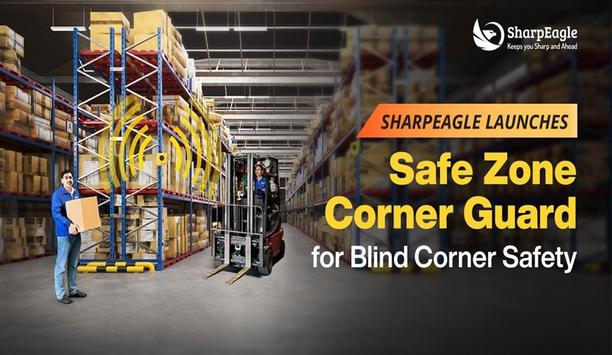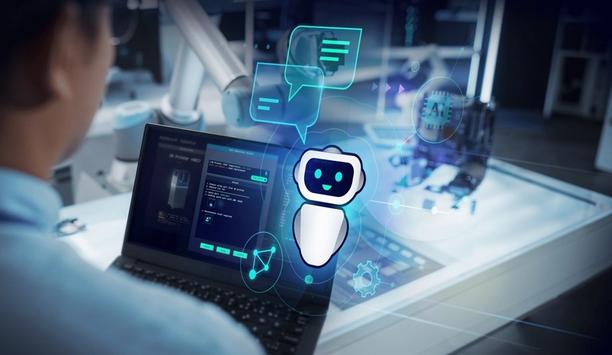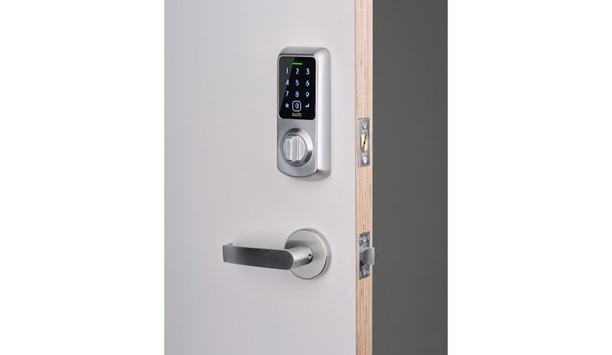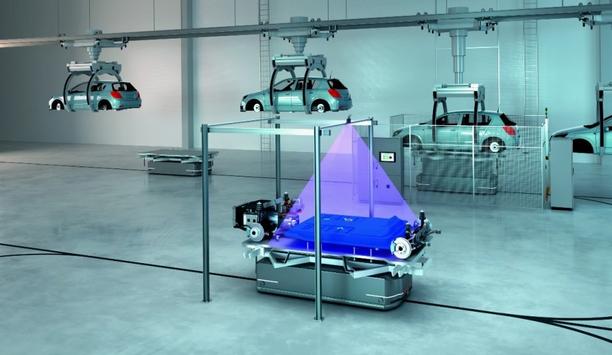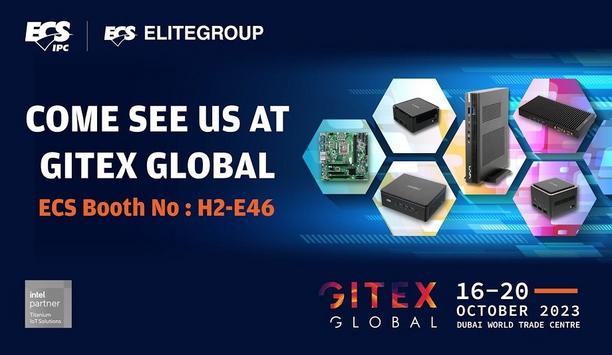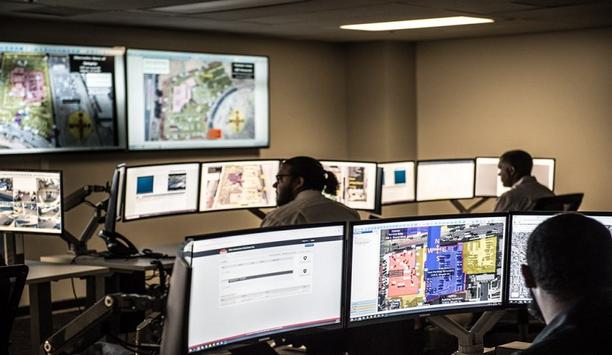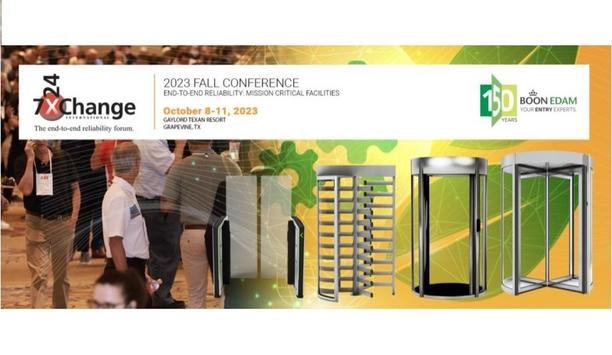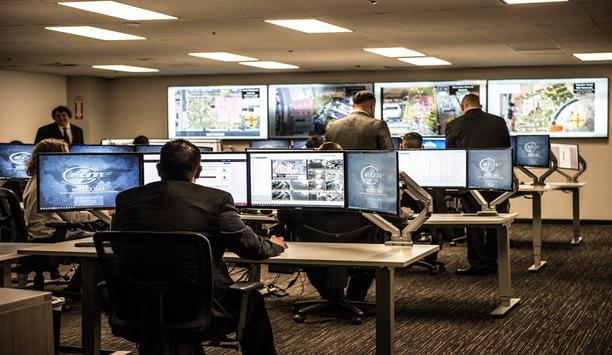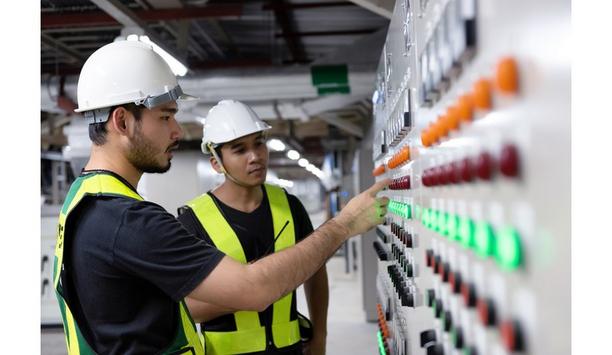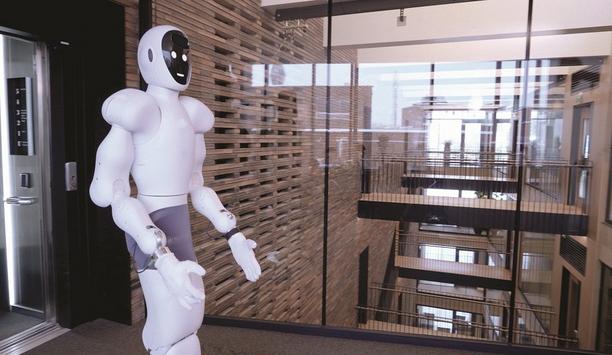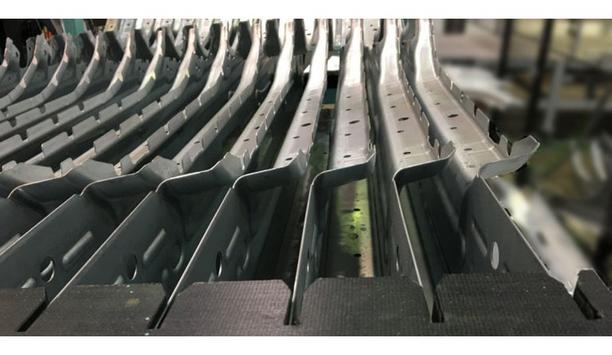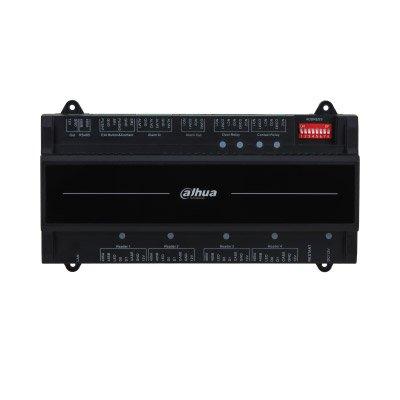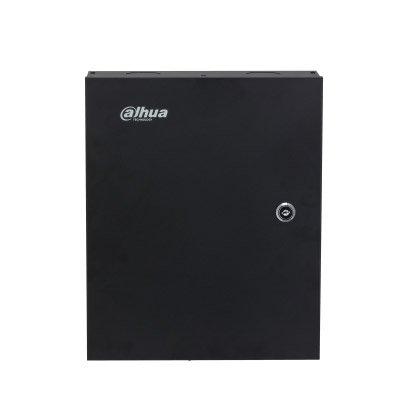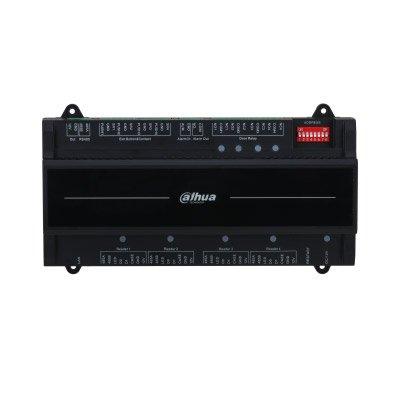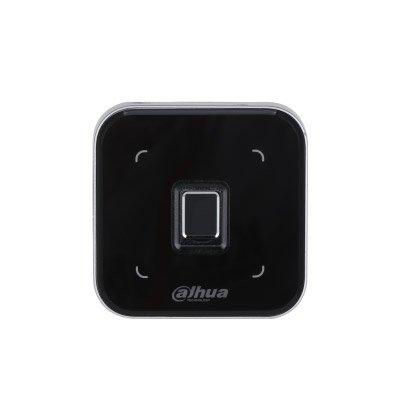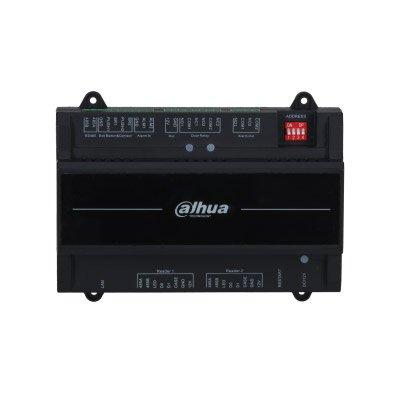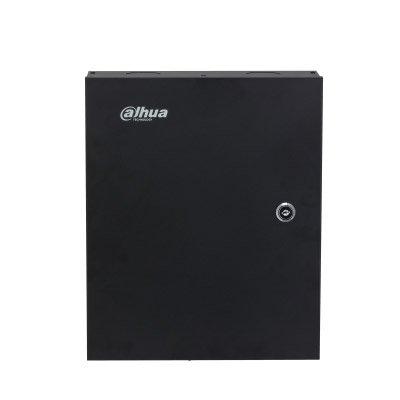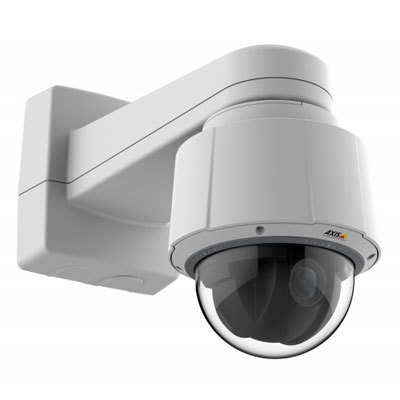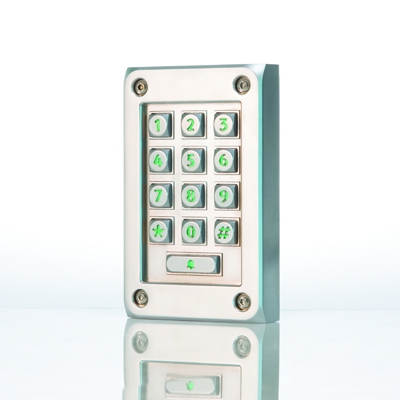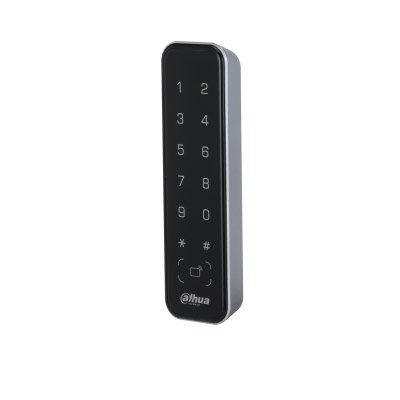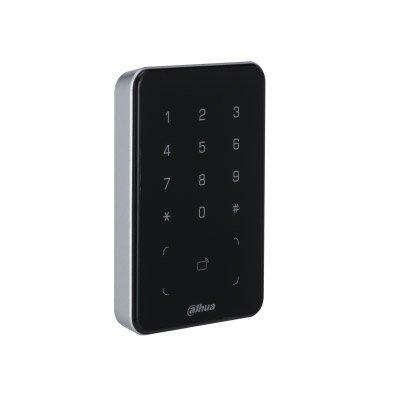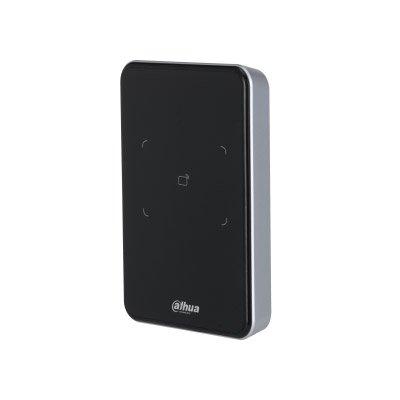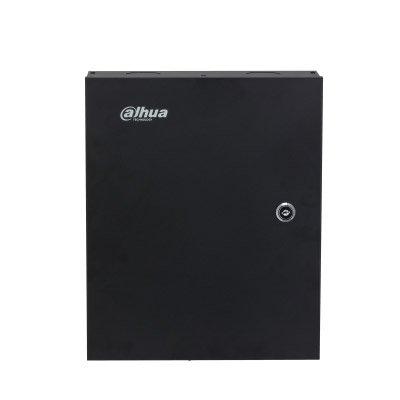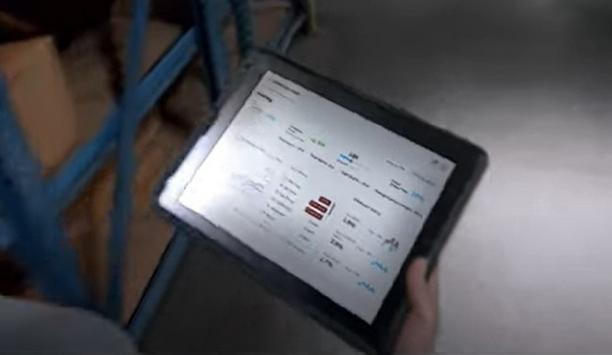Factory security
Zivver, has reached a major milestone this year, preventing over Eight million data leaks and celebrating its tenth year in email security. Established in Amsterdam in 2015 by founders Dr. Rick Goud and Wouter Klinkhamer, the organisation now employs over 130 people across Europe and the United Kingdom. Trusted protection With a focus on various sectors Zivver’s email platform enables people to communicate securely Over the last decade, Zivver has evolved their product and enter...
Regula, a global developer of forensic devices and identity verification solutions, now has 15,000 templates in its identity document template database, the most comprehensive in the world. This significant update ensures that businesses and government agencies around the globe can verify the latest IDs, including the most advanced biometric documents, with the highest accuracy. Global ID verification simplified Incorporating ID templates from 251 countries and territories and capable o...
SharpEagle Technology, a pioneer in innovative safety solutions for industrial operations, is excited to announce the launch of the Safe Zone Corner Guard, a ground-breaking device designed to prevent collisions and enhance safety in blind corners within industrial environments. Safe Zone Corner Guard The Safe Zone Corner Guard is equipped with advanced motion-sensing technology that triggers visual and audio warnings, when movement is detected from both directions, making it an essentia...
At Hannover Messe 2024, Siemens presents the first generative artificial intelligence (AI) product for engineering in an industrial environment. Siemens Industrial Copilot The Siemens Industrial Copilot, the generative AI-powered assistant, is seamlessly connected to the Totally Integrated Automation (TIA) Portal. This will enable engineering teams to find the right help topic and to generate a basic visualisation and code faster for programmable logic controllers (PLC). As a result, they wil...
SALTO is excited to launch the DBolt Touch smart deadbolt. The SALTO DBolt Touch offers a retrofit and smart locking solution for upgrading mechanical deadbolt locks in the multi-family residential market. The DBolt Touch implements the latest technology and the top level of functionality that multi-family housing residents, operators, and access managers desire and have been eagerly anticipating. SALTO’s advanced technologies Packed with all of SALTO’s most advanced technologies...
In the race to hit ambitious global net zero targets, a further two billion EVs need to be on the road by 2050, according to the International Energy Agency. To power these green motors, lithium-ion batteries are essential. But what happens when those batteries are defective? Even before assembly into a working engine, traction batteries are typically transported with a small level of charge. This is because a fully discharged battery poses problems for both the manufacturer and consumer; p...
News
Solink®, a physical security company for businesses announced its new Blocked Exit Detection capability, delivering even more value to its customers. Blocked Exit Detection Solink’s Blocked Exit Detection uses security cameras on Solink to proactively detect when perimeter doors are obstructed and notifies users to take prompt action, mitigating costly fines and improving the health and safety of employees. Exit route obstructions cost U.S.-based businesses more than $6.25M in Occupational Safety and Health Administration (OSHA) citations in 2021. Exit route obstructions accounted for approximately 25% of total OSHA retail fines in the same year. AI-based software service Blocked Exit Detection is a software service that does not require the need for specialised hardware Through powerful AI algorithms, Blocked Exit Detection uncovers obstructions at exit doors over an extended period of time and sends notifications to local or central users when discovered. Notification reminders can be set if the obstruction is not cleared within a set period of time. Blocked Exit Detection is a software service that does not require the need for specialised hardware or new cameras. ROI-driven improvement "Our customers rely on Solink to help them protect their people, patrons, and profits," said Michael Matta, CEO, of Solink. "Blocked exits are the most commonly found hazard during OSHA inspections." "In many conversations with customers, we learned that fines and safety citations were increasing with the pressure of staffing shortages. Solink partners with our customers to provide ROI-driven improvement. With Blocked Exit Detection, we're making it even easier for our customers to keep their people safe and mitigate tens of thousands of dollars in potential OSHA fines."
ECS Industrial Computer Co., Ltd., (ECSIPC) is pleased to announce its participation in GITEX 2023 where it will showcase its latest smart retail turnkey solutions, new gaming and factory automation equipment, as well as its LIVA Z5 series family of mini PCs including LIVA Z5 Plus, LIVA Z5E Plus, and brand new LIVA Z5F Plus. ECSIPC LIVA Z5F Plus applications This highly efficient mini-PC is ideal for smart retail, security, and kiosk installations, and wide-ranging industrial use cases, such as edge computing, factories, and warehousing. The fanless design minimises maintenance and allows it to continue working flawlessly even in dusty environments. Features USB4 (20Gbps) and USB 3.2 Gen 2 (10Gbps) ports are available for ultra-high-speed IO devices Inside the LIVA Z5F Plus is an Intel® 13th Gen Core™ processor with ultra-efficient 15W TDP. A generous 64GB of memory is supported, along with dual-band Wi-Fi 6, dual gigabit Ethernet, dual DisplayPort (one via USB Type-C), and dual HDMI ports. Four COM ports provide necessary legacy IO for industrial use, while USB4 (20Gbps) and USB 3.2 Gen 2 (10Gbps) ports are available for ultra-high-speed IO devices. ECSIPC will also showcase the new LIVA Z5F Plus during GITEX 2023. LIVA Z5 Plus for smart retail, digital signage, and smart kiosks During GITEX 2023, ECSIPC will showcase a range of potential applications made by combining the highly capable LIVA Z5 Plus with ECSIPC’s own software in Windows and Linux environments. An Android OS option will follow soon, powered by an upcoming Arm-powered design available by the end of 2023. These include: A 24/7 energy-efficient, multi-display video wall with a focus on low maintenance. Large format displays can be made by combining up to four displays of 4/8K60, which can show customised content and advertising. The cloud-based content management system with a signage player allows convenient access via web UI or mobile app. The Smart Retail / KIOSK demonstration exhibits easy installation and energy efficiency while allowing a wide range of display sizes for advertising or product information. Wide voltage support offers greater flexibility for potential applications and operators that need to work in a variety of environments. AI-based facial recognition is supported for applications such as security, access management, and payment authentication. ECSIPC iM6501WT embedded box PC for industrial use COM, DIO, and USB ports are ready for industrial-grade peripherals Powered by the highly efficient Intel® 11th Gen Core™ processors, this embedded PC can be customised with up to 64GB of memory, M.2 PCI-Express Gen-4 NVMe SSD, M.2 LTE/5G cellular modem, up to four displays, and it supplies integrated Wi-Fi 6 and dual Ethernet (1G+2.5G) connectivity. COM, DIO, and USB ports are ready for industrial-grade peripherals, and its wide voltage (12-24V) DC input enables a range of deployment opportunities. ECSIPC RK3568-IS1 Arm SBC for industrial use Designed for industrial use cases with a focus on power efficiency and highly compact form factor, the ECSIPC RK3568-IS1 is a new Rockchip-based SBC featuring a quad-core Arm Cortex-A55 CPU and up to 0.8TOPS AI processing. With support for multiple displays up to 4K60, MIPI-CSI camera interface, M.2 PCI-Express for storage, I2C, several USB and COM ports, the addition of Wi-Fi and LTE/5G cellular modem, and dual Ethernet. The RK3568-IS1 supports both Android and Ubuntu OS, with rich toolchains and readily available resources that allow developers to quickly deploy their software applications. ECSIPC A620AM5-M9 AMD motherboard for commercial use A comprehensive solution for the latest AMD Ryzen 7000 series processors (up to 65W), the ECSIPC A620AM5-M9 motherboard is designed for high-performance commercial use cases. It supports up to 64GB of super-fast DDR5, a PCI-Express Gen-4 16x slot for graphics cards or add-in board expansion, an ultra-high speed M.2 PCI-Express Gen-4 NVMe storage slot, four SATA ports for further storage, M.2 socket for Wi-Fi/Bluetooth, and Gigabit Ethernet. 6-channel audio is enhanced by an integrated amplifier. Six USB ports (Type-A and Type-C), plus COM and LTP ports provide support for wide-ranging commercial peripherals such as scanners, printers, and communications.
Elite Interactive Solutions (EIS), the pioneer in guard replacement services using proprietary intelligence and 100% verified police calls, announces its industry-pioneering remote guarding services are impacting crime prevention at a record pace through the first three quarters of 2023. Incident management As of Sept. 29, Elite’s Security Operations Command Centre (SOCC) had directly prevented more than 53,000 incidents since the beginning of 2023 and teamed with law enforcement in nearly 1,300 other active situations that resulted in suspects being detained or arrested 61% of the time. Tracked during the past nine months, those figures have already surpassed any prior 12-month period meaning Elite will shatter its previously impressive crime prevention accomplishments. Crime prevention Our detainments and arrests percentage has risen 10% and is on pace for an all-time high" “Not only are Elite’s crime prevention numbers up across the board, but our detainments and arrests percentage has risen 10% and is on pace for an all-time high,” says EIS Security Director Noel Delgado. “This shows police officers are getting to our calls quicker and making contact with subjects on property. On top of that, our SOCC’s voice-down numbers have improved significantly." Faster response time “These amazing results are a testament to the hard work and dedication of Elite’s technology team, as well as our Law Enforcement Advisory Board [LEAB], reaching out to agencies to achieve faster response times and educate law enforcement about Elite’s true crime prevention objectives.” Elite’s LEAB is comprised of former high-level law enforcement officials who recognise EIS’ unique capabilities to help first responders do their jobs more effectively and safely. Security Operations Command Centre (SOCC) The firm’s professional relationships and endorsements with law enforcement include FBI-LEEDA, one of the nation’s most respected organisations. Elite is the first U.S. security company to eliminate false alarms for their customers, an additional tremendous benefit to responding agencies. In all, with a steady upward trajectory since 2019, Elite has more than doubled the total volume of events and voice-down crime preventions handled within its state-of-the-art SOCC.
Boon Edam Inc., a manufacturer of secured entry solutions, will highlight their best practices for data centre layered security as a Silver Sponsor at 7x24 Exchange. The conference, to be held October 8-11, 2023 in Grapevine, TX, is an important event for those involved with protecting critical infrastructure such as data centres. Data centre protection “Helping to protect data centres with our suite of secured entry solutions is a core component of our mission at Boon Edam,” said Patrick Nora, President, and Managing Director, of Boon Edam. He adds, “Data centres are truly the lifeblood of today’s society, storing the essential information needed for the daily functioning of utilities, financial organisations, government, and more. We’re pleased to be a Silver Sponsor at 7x24 Exchange, to demonstrate how we can help to safeguard this important infrastructure.” 7x24 Exchange conference The 7x24 Exchange conference is a valuable forum for individuals and organisations like Boon Edam involved with all aspects of 7x24 infrastructures. Boon Edam’s interlocking portals, security revolving doors, turnstiles, and other secured entry solutions, help to protect data centres and the vital information they store while maintaining access for authorised individuals.
From 10 to 13 October, the global airport community will gather for the 24th edition of inter airport Europe at the Munich Trade Fair Centre in Germany. The event returns with an impressive line-up of well over 400 airport suppliers from 37 countries, including seven national pavilions and more than 100 new exhibitors. Live exhibits Visitors can look forward to plenty of live exhibits in the halls and Outdoor Area and a new 600 square metre GSE Experience Area. An exciting event programme including Technical Seminars, Innovation Awards, and the co-located inter airport FOCUS, The Sustainability Summit provides interesting opportunities to further engage with new technologies and suppliers, all dedicated to improving airport performance while delivering a return on investment. New economic importance inter airport Europe has developed into the most senior gathering of global airport operators, airlines, CAAs, service suppliers The Munich Trade Fair Centre will once again turn into the world’s biggest hub for exploring and sourcing new technology, equipment, and services for better airports. Over nearly 50 years, inter airport Europe has developed into the most senior gathering of global airport operators, airlines, CAAs, service suppliers, investors, and other experts in this sector. The upcoming event marks another milestone for the airport industry which is currently rising to new economic importance with a multitude of opportunities and challenges. Airport professionals Airport professionals from more than 100 countries have already registered as visitors, including key representatives from AENA, Air France, Deutsche Lufthansa, Fraport AG, Heathrow Airport, İGA Istanbul Airport, Oman Airports, Shell Aviation, WISAG, and many more. Over four exhibition days, they can explore an excellent cross-section of technologies and services for the entire airport supply chain, including airside operations, terminal management, passenger services, baggage handling, safety and security, airport IT, air traffic control, airport maintenance, and environmental management. Insights into technology innovations Networking and knowledge platform on how to develop, embed, and integrate sustainability strategies An impressive programme of accompanying events offers additional insights into technology innovations about wider market trends. These include Technical Seminars, Innovation Insight Sessions, the prestigious Innovation Awards, and the co-located inter airport FOCUS Sustainability Summit, a two-day, high-profile networking and knowledge platform on how to develop, embed, and integrate sustainability strategies into every aspect of airport life. Roadmap to airport operations “Co-locating exhibition and summit is an exciting opportunity for us to provide more value to the global airport community. Both events naturally complement each other, providing attendees with a great roadmap to future-proof their airport operations,” says Olaf Freier, Portfolio Director Transport of inter airport Europe, on behalf of show organiser RX. “The co-location offers new and encouraging perspectives that will help pave the way for innovation, resilience, and sustainability at future airports.” inter airport Europe at a glance: Indoor and outdoor stands with live equipment Over 30% of exhibitors are newcomers on the inter airport show floor, forming an impressive line-up A large show floor in halls B5, and B6, and the adjacent outdoor area invite visitors to discover more than 400 suppliers who deliver advanced airport equipment, technology, and services across the globe. The top five exhibitor countries are Germany, Italy, the United Kingdom, France, and the Netherlands, with 37 countries represented in total. Over 30% of exhibitors are newcomers on the inter airport show floor, forming an impressive line-up of well-known international brands alongside promising startups and scaleups. A new 600 square metre GSE Experience Area, sponsored by Weihai Guangtai Airport Equipment, will offer visitors the opportunity to see the latest equipment for aprons and runways live and in action. National Pavilions and First-time Exhibitors Several National Pavilions will feature this year – Italy, France, the UK, the Netherlands, Finland, and newcomer Spain, all showcasing some of their countries’ finest tech companies and products. Long-term show partner GATE (The Airport Technology Network) will be hosting a number of its members at their dedicated GATE Pavilion again. In addition, there will be two First-time Exhibitor pavilions specifically dedicated to companies new to inter airport Europe. Opening and Innovations Awards Ceremony The spotlight on best practices, technologies, and partnerships that drive innovation and excellence The inter airport Europe Innovation Awards celebrate the achievements of the many inventors and technical pioneers within the exhibitor community, putting the spotlight on best practices, technologies, and partnerships that drive innovation and excellence for better airports. The winners will be announced at the Opening and Innovation Awards Ceremony on Tuesday, 10th October, 11:00 - 12:00, at the Seminar Theatre in Hall B5. Welcoming presentations include speeches from Nicola Hamann, Managing Director at RX, Kay Bärenfänger, President at GATE Alliance, and Jost Lammers, CEO at Munich Airport. Seminar Programme: Three days of expert talks The free-to-attend inter airport Europe Seminar features a selection of technical talks on pioneering solutions and approaches to pressing airport issues, including the Innovation Insight Sessions featuring participants of the Innovation Awards. The 15-to-30-minute sessions will touch on key aspects of the passenger experience and passenger journey, baggage handling, security systems, as well as ramp and terminal management. The technical seminars will run between 10 - 12 October at the Seminar Theatre in Hall B5, stand B5-1580. Visit the show website for the full seminar agenda. inter airport FOCUS – The Sustainability Summit The Sustainability Summit offers two days of top-tier education, networking, and collaboration opportunities The co-located inter airport FOCUS – The Sustainability Summit offers two days of top-tier education, networking, and collaboration opportunities for aviation stakeholders looking to develop, discuss, or initiate sustainability measures required to reach their net zero commitments, including sustainable airport operations, net-zero infrastructure, and new mobility concepts. inter airport FOCUS takes place on 11 and 12 October at the Press Centre East Entrance (Rooms 1A, 1B, 2). The Summit tickets can be purchased online or on-site and also include free entry to the inter airport Europe exhibition and seminars. For the full summit programme, please visit inter airport FOCUS. Visitor tools, Matchmaking Visitors are invited to use the Exhibitor List Tool and Online Show Preview to search for products and companies that are of particular interest to them. Once registered, visitors have access to the inter airport Europe Matchmaking Platform, allowing them to send or receive meeting invitations based on their business requirements. Meetings can be arranged at the exhibitor’s stand or in the dedicated meeting lounge in Hall B6, stand B6-590. Hosted Buyer Programme The Hosted Buyer Programme offers a tailored networking experience with industry pioneers The Hosted Buyer Programme offers a tailored networking experience with industry pioneers from airfield construction, ground handling, ground support equipment, interior design, hardware and software solutions, terminal infrastructure, and operations in the 2023 group. It focuses on growing markets and emerging regions, with buyers from UAE, India, Kenya, South Africa, Saudi Arabia, and Ghana, and it is an excellent opportunity to open up new markets for exhibitors. Venue, tickets, and opening times inter airport Europe 2023, the 24th International Exhibition for Airport Equipment, Technology, Design, and Services, takes place in halls B5, B6, and the adjacent outdoor area at the Munich Trade Fair Centre in Germany. Access to the exhibition halls is via Entrance East. Please visit the Online Travel Hub for further information on transport, accommodation, and visa. Show opening hours are from 9:00 AM to 5:00 PM on Tuesday, Wednesday, and Thursday (10 to 12 October), and from 9:00 AM to 3:00 PM on Friday (13 October). Visitors can register via the Online Ticket Shop and benefit from a reduced price when purchasing their ticket in advance. Day tickets cost €42 online or €52 on-site; season tickets cost €62 online or €72 on-site.
ISS (Intelligent Security Systems), a global provider of video intelligence and data awareness solutions, announced that industry veterans Dennis Connor and Jason Lloyd have joined the company as its new Director of Program Management NA and Regional Business Manager for the Midwest respectively. Dennis Connor's responsibilities Connor, who most recently served as Program/Project Manager for CX (customer experience) Initiatives at ADT, will spearhead the development of new end-user and partner deployment methodologies for ISS. He will simultaneously work with the company’s sales, engineering, manufacturing, and R&D teams to create and foster other customer engagement programmes. Work experience Connor has an extensive background in similar initiatives throughout his time in the security industry, beginning in the early 2000s as Program Manager, Returns and Repairs Operations, at Tyco International. He would go on to work at the company in various leadership positions for the next 14 years, overseeing its transition from a Bermuda-domiciled organisation with a U.S. headquarters in New Jersey to being a Swiss-based company. AI-powered video analytics ISS is in a tremendous position to take advantage of the third wave of video surveillance innovation" “As the preeminent developer of AI-powered video analytics globally, ISS is in a tremendous position to take advantage of the third wave of video surveillance innovation the industry currently finds itself in,” said Connor. “I have a lot of operational experience to bring to the table and ISS, in a sense, represents just a larger version of what I have gone through in the past establishing programme management initiatives at other firms.” Jason Lloyd's responsibilities Lloyd, who most recently served as Regional Sales Manager at Vicon, will be responsible for driving the sales and business development efforts for ISS across the Midwest. Prior to Vicon, Lloyd headed up a low-voltage division at ADT for just over a decade. High-trust video intelligence solutions My goal is to exceed customer expectations and demonstrate how they can leverage our neural network technology" “Being laser-focused on customer service and providing high-trust video intelligence solutions that are solving actual security and business challenges today was one of the factors that most appealed to me about ISS,” said Lloyd. “My goal is to exceed customer expectations and demonstrate how they can leverage our industry-pioneering neural network technology to keep their businesses safe.” Matt comments “ISS is experiencing incredible growth, not only in North America, but globally, and bringing in experienced team members will be critical to our continued growth,” explained Matt Powell, Managing Director for North America at ISS. “With Jason, we gain a well-respected face, and voice of our partners, in the Midwest. And in Dennis, we gain an experienced program manager who will ensure that we speak the language of success to our integration partners and customers alike." Integration in the value chain The experience of both Jason and Dennis shows that we are dedicated to a new approach to the North American market" "Solution creators must strive to do a better job of speaking ‘integration’ to our integrators, pulling them into the value chain instead of pushing them out." "That begins with the relationships we build and our value propositions to our partners and customers. The experience of both Jason and Dennis show that we are dedicated to a new approach to the North American market and continued growth of ISS.” Education Connor, who has a degree in industrial engineering from Virginia Polytechnic Institute and State University and is also Six Sigma/Lean DMAIC Master Black Belt and Scrum Master certified, resides in Orlando. Lloyd, PSP, PMP, who is based in Chicago and holds Lenel Master and Genetec certifications.
Solink®, a physical security company for businesses announced its new Blocked Exit Detection capability, delivering even more value to its customers. Blocked Exit Detection Solink’s Blocked Exit Detection uses security cameras on Solink to proactively detect when perimeter doors are obstructed and notifies users to take prompt action, mitigating costly fines and improving the health and safety of employees. Exit route obstructions cost U.S.-based businesses more than $6.25M in Occupational Safety and Health Administration (OSHA) citations in 2021. Exit route obstructions accounted for approximately 25% of total OSHA retail fines in the same year. AI-based software service Blocked Exit Detection is a software service that does not require the need for specialised hardware Through powerful AI algorithms, Blocked Exit Detection uncovers obstructions at exit doors over an extended period of time and sends notifications to local or central users when discovered. Notification reminders can be set if the obstruction is not cleared within a set period of time. Blocked Exit Detection is a software service that does not require the need for specialised hardware or new cameras. ROI-driven improvement "Our customers rely on Solink to help them protect their people, patrons, and profits," said Michael Matta, CEO, of Solink. "Blocked exits are the most commonly found hazard during OSHA inspections." "In many conversations with customers, we learned that fines and safety citations were increasing with the pressure of staffing shortages. Solink partners with our customers to provide ROI-driven improvement. With Blocked Exit Detection, we're making it even easier for our customers to keep their people safe and mitigate tens of thousands of dollars in potential OSHA fines."
ECS Industrial Computer Co., Ltd., (ECSIPC) is pleased to announce its participation in GITEX 2023 where it will showcase its latest smart retail turnkey solutions, new gaming and factory automation equipment, as well as its LIVA Z5 series family of mini PCs including LIVA Z5 Plus, LIVA Z5E Plus, and brand new LIVA Z5F Plus. ECSIPC LIVA Z5F Plus applications This highly efficient mini-PC is ideal for smart retail, security, and kiosk installations, and wide-ranging industrial use cases, such as edge computing, factories, and warehousing. The fanless design minimises maintenance and allows it to continue working flawlessly even in dusty environments. Features USB4 (20Gbps) and USB 3.2 Gen 2 (10Gbps) ports are available for ultra-high-speed IO devices Inside the LIVA Z5F Plus is an Intel® 13th Gen Core™ processor with ultra-efficient 15W TDP. A generous 64GB of memory is supported, along with dual-band Wi-Fi 6, dual gigabit Ethernet, dual DisplayPort (one via USB Type-C), and dual HDMI ports. Four COM ports provide necessary legacy IO for industrial use, while USB4 (20Gbps) and USB 3.2 Gen 2 (10Gbps) ports are available for ultra-high-speed IO devices. ECSIPC will also showcase the new LIVA Z5F Plus during GITEX 2023. LIVA Z5 Plus for smart retail, digital signage, and smart kiosks During GITEX 2023, ECSIPC will showcase a range of potential applications made by combining the highly capable LIVA Z5 Plus with ECSIPC’s own software in Windows and Linux environments. An Android OS option will follow soon, powered by an upcoming Arm-powered design available by the end of 2023. These include: A 24/7 energy-efficient, multi-display video wall with a focus on low maintenance. Large format displays can be made by combining up to four displays of 4/8K60, which can show customised content and advertising. The cloud-based content management system with a signage player allows convenient access via web UI or mobile app. The Smart Retail / KIOSK demonstration exhibits easy installation and energy efficiency while allowing a wide range of display sizes for advertising or product information. Wide voltage support offers greater flexibility for potential applications and operators that need to work in a variety of environments. AI-based facial recognition is supported for applications such as security, access management, and payment authentication. ECSIPC iM6501WT embedded box PC for industrial use COM, DIO, and USB ports are ready for industrial-grade peripherals Powered by the highly efficient Intel® 11th Gen Core™ processors, this embedded PC can be customised with up to 64GB of memory, M.2 PCI-Express Gen-4 NVMe SSD, M.2 LTE/5G cellular modem, up to four displays, and it supplies integrated Wi-Fi 6 and dual Ethernet (1G+2.5G) connectivity. COM, DIO, and USB ports are ready for industrial-grade peripherals, and its wide voltage (12-24V) DC input enables a range of deployment opportunities. ECSIPC RK3568-IS1 Arm SBC for industrial use Designed for industrial use cases with a focus on power efficiency and highly compact form factor, the ECSIPC RK3568-IS1 is a new Rockchip-based SBC featuring a quad-core Arm Cortex-A55 CPU and up to 0.8TOPS AI processing. With support for multiple displays up to 4K60, MIPI-CSI camera interface, M.2 PCI-Express for storage, I2C, several USB and COM ports, the addition of Wi-Fi and LTE/5G cellular modem, and dual Ethernet. The RK3568-IS1 supports both Android and Ubuntu OS, with rich toolchains and readily available resources that allow developers to quickly deploy their software applications. ECSIPC A620AM5-M9 AMD motherboard for commercial use A comprehensive solution for the latest AMD Ryzen 7000 series processors (up to 65W), the ECSIPC A620AM5-M9 motherboard is designed for high-performance commercial use cases. It supports up to 64GB of super-fast DDR5, a PCI-Express Gen-4 16x slot for graphics cards or add-in board expansion, an ultra-high speed M.2 PCI-Express Gen-4 NVMe storage slot, four SATA ports for further storage, M.2 socket for Wi-Fi/Bluetooth, and Gigabit Ethernet. 6-channel audio is enhanced by an integrated amplifier. Six USB ports (Type-A and Type-C), plus COM and LTP ports provide support for wide-ranging commercial peripherals such as scanners, printers, and communications.
Elite Interactive Solutions (EIS), the pioneer in guard replacement services using proprietary intelligence and 100% verified police calls, announces its industry-pioneering remote guarding services are impacting crime prevention at a record pace through the first three quarters of 2023. Incident management As of Sept. 29, Elite’s Security Operations Command Centre (SOCC) had directly prevented more than 53,000 incidents since the beginning of 2023 and teamed with law enforcement in nearly 1,300 other active situations that resulted in suspects being detained or arrested 61% of the time. Tracked during the past nine months, those figures have already surpassed any prior 12-month period meaning Elite will shatter its previously impressive crime prevention accomplishments. Crime prevention Our detainments and arrests percentage has risen 10% and is on pace for an all-time high" “Not only are Elite’s crime prevention numbers up across the board, but our detainments and arrests percentage has risen 10% and is on pace for an all-time high,” says EIS Security Director Noel Delgado. “This shows police officers are getting to our calls quicker and making contact with subjects on property. On top of that, our SOCC’s voice-down numbers have improved significantly." Faster response time “These amazing results are a testament to the hard work and dedication of Elite’s technology team, as well as our Law Enforcement Advisory Board [LEAB], reaching out to agencies to achieve faster response times and educate law enforcement about Elite’s true crime prevention objectives.” Elite’s LEAB is comprised of former high-level law enforcement officials who recognise EIS’ unique capabilities to help first responders do their jobs more effectively and safely. Security Operations Command Centre (SOCC) The firm’s professional relationships and endorsements with law enforcement include FBI-LEEDA, one of the nation’s most respected organisations. Elite is the first U.S. security company to eliminate false alarms for their customers, an additional tremendous benefit to responding agencies. In all, with a steady upward trajectory since 2019, Elite has more than doubled the total volume of events and voice-down crime preventions handled within its state-of-the-art SOCC.
Boon Edam Inc., a manufacturer of secured entry solutions, will highlight their best practices for data centre layered security as a Silver Sponsor at 7x24 Exchange. The conference, to be held October 8-11, 2023 in Grapevine, TX, is an important event for those involved with protecting critical infrastructure such as data centres. Data centre protection “Helping to protect data centres with our suite of secured entry solutions is a core component of our mission at Boon Edam,” said Patrick Nora, President, and Managing Director, of Boon Edam. He adds, “Data centres are truly the lifeblood of today’s society, storing the essential information needed for the daily functioning of utilities, financial organisations, government, and more. We’re pleased to be a Silver Sponsor at 7x24 Exchange, to demonstrate how we can help to safeguard this important infrastructure.” 7x24 Exchange conference The 7x24 Exchange conference is a valuable forum for individuals and organisations like Boon Edam involved with all aspects of 7x24 infrastructures. Boon Edam’s interlocking portals, security revolving doors, turnstiles, and other secured entry solutions, help to protect data centres and the vital information they store while maintaining access for authorised individuals.
From 10 to 13 October, the global airport community will gather for the 24th edition of inter airport Europe at the Munich Trade Fair Centre in Germany. The event returns with an impressive line-up of well over 400 airport suppliers from 37 countries, including seven national pavilions and more than 100 new exhibitors. Live exhibits Visitors can look forward to plenty of live exhibits in the halls and Outdoor Area and a new 600 square metre GSE Experience Area. An exciting event programme including Technical Seminars, Innovation Awards, and the co-located inter airport FOCUS, The Sustainability Summit provides interesting opportunities to further engage with new technologies and suppliers, all dedicated to improving airport performance while delivering a return on investment. New economic importance inter airport Europe has developed into the most senior gathering of global airport operators, airlines, CAAs, service suppliers The Munich Trade Fair Centre will once again turn into the world’s biggest hub for exploring and sourcing new technology, equipment, and services for better airports. Over nearly 50 years, inter airport Europe has developed into the most senior gathering of global airport operators, airlines, CAAs, service suppliers, investors, and other experts in this sector. The upcoming event marks another milestone for the airport industry which is currently rising to new economic importance with a multitude of opportunities and challenges. Airport professionals Airport professionals from more than 100 countries have already registered as visitors, including key representatives from AENA, Air France, Deutsche Lufthansa, Fraport AG, Heathrow Airport, İGA Istanbul Airport, Oman Airports, Shell Aviation, WISAG, and many more. Over four exhibition days, they can explore an excellent cross-section of technologies and services for the entire airport supply chain, including airside operations, terminal management, passenger services, baggage handling, safety and security, airport IT, air traffic control, airport maintenance, and environmental management. Insights into technology innovations Networking and knowledge platform on how to develop, embed, and integrate sustainability strategies An impressive programme of accompanying events offers additional insights into technology innovations about wider market trends. These include Technical Seminars, Innovation Insight Sessions, the prestigious Innovation Awards, and the co-located inter airport FOCUS Sustainability Summit, a two-day, high-profile networking and knowledge platform on how to develop, embed, and integrate sustainability strategies into every aspect of airport life. Roadmap to airport operations “Co-locating exhibition and summit is an exciting opportunity for us to provide more value to the global airport community. Both events naturally complement each other, providing attendees with a great roadmap to future-proof their airport operations,” says Olaf Freier, Portfolio Director Transport of inter airport Europe, on behalf of show organiser RX. “The co-location offers new and encouraging perspectives that will help pave the way for innovation, resilience, and sustainability at future airports.” inter airport Europe at a glance: Indoor and outdoor stands with live equipment Over 30% of exhibitors are newcomers on the inter airport show floor, forming an impressive line-up A large show floor in halls B5, and B6, and the adjacent outdoor area invite visitors to discover more than 400 suppliers who deliver advanced airport equipment, technology, and services across the globe. The top five exhibitor countries are Germany, Italy, the United Kingdom, France, and the Netherlands, with 37 countries represented in total. Over 30% of exhibitors are newcomers on the inter airport show floor, forming an impressive line-up of well-known international brands alongside promising startups and scaleups. A new 600 square metre GSE Experience Area, sponsored by Weihai Guangtai Airport Equipment, will offer visitors the opportunity to see the latest equipment for aprons and runways live and in action. National Pavilions and First-time Exhibitors Several National Pavilions will feature this year – Italy, France, the UK, the Netherlands, Finland, and newcomer Spain, all showcasing some of their countries’ finest tech companies and products. Long-term show partner GATE (The Airport Technology Network) will be hosting a number of its members at their dedicated GATE Pavilion again. In addition, there will be two First-time Exhibitor pavilions specifically dedicated to companies new to inter airport Europe. Opening and Innovations Awards Ceremony The spotlight on best practices, technologies, and partnerships that drive innovation and excellence The inter airport Europe Innovation Awards celebrate the achievements of the many inventors and technical pioneers within the exhibitor community, putting the spotlight on best practices, technologies, and partnerships that drive innovation and excellence for better airports. The winners will be announced at the Opening and Innovation Awards Ceremony on Tuesday, 10th October, 11:00 - 12:00, at the Seminar Theatre in Hall B5. Welcoming presentations include speeches from Nicola Hamann, Managing Director at RX, Kay Bärenfänger, President at GATE Alliance, and Jost Lammers, CEO at Munich Airport. Seminar Programme: Three days of expert talks The free-to-attend inter airport Europe Seminar features a selection of technical talks on pioneering solutions and approaches to pressing airport issues, including the Innovation Insight Sessions featuring participants of the Innovation Awards. The 15-to-30-minute sessions will touch on key aspects of the passenger experience and passenger journey, baggage handling, security systems, as well as ramp and terminal management. The technical seminars will run between 10 - 12 October at the Seminar Theatre in Hall B5, stand B5-1580. Visit the show website for the full seminar agenda. inter airport FOCUS – The Sustainability Summit The Sustainability Summit offers two days of top-tier education, networking, and collaboration opportunities The co-located inter airport FOCUS – The Sustainability Summit offers two days of top-tier education, networking, and collaboration opportunities for aviation stakeholders looking to develop, discuss, or initiate sustainability measures required to reach their net zero commitments, including sustainable airport operations, net-zero infrastructure, and new mobility concepts. inter airport FOCUS takes place on 11 and 12 October at the Press Centre East Entrance (Rooms 1A, 1B, 2). The Summit tickets can be purchased online or on-site and also include free entry to the inter airport Europe exhibition and seminars. For the full summit programme, please visit inter airport FOCUS. Visitor tools, Matchmaking Visitors are invited to use the Exhibitor List Tool and Online Show Preview to search for products and companies that are of particular interest to them. Once registered, visitors have access to the inter airport Europe Matchmaking Platform, allowing them to send or receive meeting invitations based on their business requirements. Meetings can be arranged at the exhibitor’s stand or in the dedicated meeting lounge in Hall B6, stand B6-590. Hosted Buyer Programme The Hosted Buyer Programme offers a tailored networking experience with industry pioneers The Hosted Buyer Programme offers a tailored networking experience with industry pioneers from airfield construction, ground handling, ground support equipment, interior design, hardware and software solutions, terminal infrastructure, and operations in the 2023 group. It focuses on growing markets and emerging regions, with buyers from UAE, India, Kenya, South Africa, Saudi Arabia, and Ghana, and it is an excellent opportunity to open up new markets for exhibitors. Venue, tickets, and opening times inter airport Europe 2023, the 24th International Exhibition for Airport Equipment, Technology, Design, and Services, takes place in halls B5, B6, and the adjacent outdoor area at the Munich Trade Fair Centre in Germany. Access to the exhibition halls is via Entrance East. Please visit the Online Travel Hub for further information on transport, accommodation, and visa. Show opening hours are from 9:00 AM to 5:00 PM on Tuesday, Wednesday, and Thursday (10 to 12 October), and from 9:00 AM to 3:00 PM on Friday (13 October). Visitors can register via the Online Ticket Shop and benefit from a reduced price when purchasing their ticket in advance. Day tickets cost €42 online or €52 on-site; season tickets cost €62 online or €72 on-site.
ISS (Intelligent Security Systems), a global provider of video intelligence and data awareness solutions, announced that industry veterans Dennis Connor and Jason Lloyd have joined the company as its new Director of Program Management NA and Regional Business Manager for the Midwest respectively. Dennis Connor's responsibilities Connor, who most recently served as Program/Project Manager for CX (customer experience) Initiatives at ADT, will spearhead the development of new end-user and partner deployment methodologies for ISS. He will simultaneously work with the company’s sales, engineering, manufacturing, and R&D teams to create and foster other customer engagement programmes. Work experience Connor has an extensive background in similar initiatives throughout his time in the security industry, beginning in the early 2000s as Program Manager, Returns and Repairs Operations, at Tyco International. He would go on to work at the company in various leadership positions for the next 14 years, overseeing its transition from a Bermuda-domiciled organisation with a U.S. headquarters in New Jersey to being a Swiss-based company. AI-powered video analytics ISS is in a tremendous position to take advantage of the third wave of video surveillance innovation" “As the preeminent developer of AI-powered video analytics globally, ISS is in a tremendous position to take advantage of the third wave of video surveillance innovation the industry currently finds itself in,” said Connor. “I have a lot of operational experience to bring to the table and ISS, in a sense, represents just a larger version of what I have gone through in the past establishing programme management initiatives at other firms.” Jason Lloyd's responsibilities Lloyd, who most recently served as Regional Sales Manager at Vicon, will be responsible for driving the sales and business development efforts for ISS across the Midwest. Prior to Vicon, Lloyd headed up a low-voltage division at ADT for just over a decade. High-trust video intelligence solutions My goal is to exceed customer expectations and demonstrate how they can leverage our neural network technology" “Being laser-focused on customer service and providing high-trust video intelligence solutions that are solving actual security and business challenges today was one of the factors that most appealed to me about ISS,” said Lloyd. “My goal is to exceed customer expectations and demonstrate how they can leverage our industry-pioneering neural network technology to keep their businesses safe.” Matt comments “ISS is experiencing incredible growth, not only in North America, but globally, and bringing in experienced team members will be critical to our continued growth,” explained Matt Powell, Managing Director for North America at ISS. “With Jason, we gain a well-respected face, and voice of our partners, in the Midwest. And in Dennis, we gain an experienced program manager who will ensure that we speak the language of success to our integration partners and customers alike." Integration in the value chain The experience of both Jason and Dennis shows that we are dedicated to a new approach to the North American market" "Solution creators must strive to do a better job of speaking ‘integration’ to our integrators, pulling them into the value chain instead of pushing them out." "That begins with the relationships we build and our value propositions to our partners and customers. The experience of both Jason and Dennis show that we are dedicated to a new approach to the North American market and continued growth of ISS.” Education Connor, who has a degree in industrial engineering from Virginia Polytechnic Institute and State University and is also Six Sigma/Lean DMAIC Master Black Belt and Scrum Master certified, resides in Orlando. Lloyd, PSP, PMP, who is based in Chicago and holds Lenel Master and Genetec certifications.


Expert commentary
The average business owner or investor has some kind of security precaution in place, especially in the after-hours when there are fewer deterrents to inhibit criminal activity. Security guards, video surveillance systems, motion sensor lights, or even just fake cameras placed around the property are some of the common options people choose. Future of overnight security Smart business owners are starting to realise, however, that some of these traditional security measures are becoming antiquated and no longer cutting. The now and future of overnight security is in remote guarding. Pioneered by companies like Los Angeles-based Elite Interactive Solutions, which was founded back in 2007, remote guarding is revolutionising the overnight security business. Minimising criminal activity Remote guarding is fast becoming the most popular choice among commercial end-user property owners Remote guarding utilises a combination of cutting-edge technology, “digital guards,” highly trained security agents, and local law enforcement if and when necessary to minimise the potential of criminal activity. For those adequately enlightened to its overwhelmingly impressive crime prevention capabilities, remote guarding is fast becoming the most popular choice among commercial end-user property owners to secure and protect their investments. What Is remote guarding? Remote guarding is a revolutionary concept and increasing trend in security systems that utilises a combination of methods to effectively analyse potential threats to property. Cameras and/or other monitoring devices running highly advanced algorithmic software are installed in strategic areas or vulnerable places onsite and remotely located security agents are immediately notified of any activity within a designated perimeter of the property. A blend of AI, cybersecurity, and video analytics When properly deployed by an expert provider, the technology stack includes a proprietary blend of video analytics, artificial intelligence, cybersecurity, and more. Done right, “noise” is effectively filtered out, allowing agents to act on legitimate alerts and achieve zero false alarms communicated to first responders. Today, there are a lot of terms and descriptions tossed around about remote guarding, remote video, virtual guarding, etc., but those attributes must be present to represent the true definition of the offering and its many virtues. Realtime situational awareness Many systems have a two-way speaker that allows the security agent to give a verbal warning When specially trained security agents are alerted to trespassers, possible intruders, or other suspicious activity, they analyse the situation in real-time and determine the necessary level of action. Many systems have a two-way speaker that allows the security agent to give a verbal warning, known as a voice-down, to the individual(s) that they are being watched. Most perpetrators, often believing the response is emanating directly from security personnel on the property itself rather than from a remote command centre, flee immediately. However, if the threat persists, the security agent enlists local law enforcement to get on the scene. Customised remote guarding When properly deployed, remote guarding systems are also customised to specific properties. A team of consultants visits the client’s property to evaluate its vulnerabilities and where to best place cameras and/or other monitoring devices for system efficacy. Traditional security shortfalls According to Keith Bushey, a retired commander for the Los Angeles Police Department, there is much frustration between law enforcement officers and potential victims of crime due to the historically unreliable performance of traditional burglar alarm systems and central monitoring stations. He states about 90% of security-related calls are false alarms, a problem that has been well-documented through the years. Onsite challenges When a legitimate emergency does occur, the perpetrators have often already done their damage When a legitimate emergency does occur, the perpetrators have often already done their damage and/or escaped by the time law enforcement arrives. Onsite security guards are not the remedy either as they bring their own set of issues and challenges. Unexpected costs Traditional security systems can also have unexpected costs. The cost is not only in the security guards’ paycheck or the cost of the equipment itself. The cost comes when an actual incident occurs. In worst-case scenarios, the security guard(s) are injured, the business suffers inventory loss, and/or damage is sustained to the property. The medical and other costs for the security guard(s), the loss of inventory, property damage, deployment of law enforcement resources, and possible fallout of legal expenses all add up. Even in the best-case scenario, false alarm expenses incur if law enforcement is dispatched. These, among many others, are some of the primary issues that remote guarding resoundingly answers as a superior alternative. A bounty of benefits Remote guarding systems have been proven to cut costs and be more effective than traditional security systems. Even though the monthly monitoring costs of remote guarding are significantly higher than traditional intrusion detection system monitoring, the much higher effectiveness in crime reduction, elimination of false alarms, and augmenting or replacement of manned guards result in a substantially higher return on investment (ROI) to the end user. Easy tracking of threats The security cameras already have their image captured on record, making them easier to track down For example, case studies have demonstrated reduced security costs for clients by 60%, on average. These reductions have come from the costs of security staff, inventory, or property loss, plus saving money on insurance premiums and deductibles. The nature of remote guarding reduces the risk and costs of false alarms, with professional security agents able to determine an actual threat before law enforcement is called. In a rare instance when a perpetrator escapes before law enforcement arrives or can detain the individual(s), the security cameras already have their image captured on record, making them easier to track down and identify. Reduction of false alarms The significant reduction in false alarms is greatly appreciated by law enforcement, as it allows them to focus on real emergencies or crises. Better relationships are also developed between clients and law enforcement, as remote guarding systems are highly reliable in providing accurate and real-time information to officers as they approach the scene. In short, it assists law enforcement in doing their job more effectively, as well as more safely thanks to having eyewitness information before engaging in an active crime scene. Partnership When you combine the decreased cost with the increased efficiency and success rate, it is easy to see why many commercial end-user property owners across the country are making the shift to remote guarding. It’s also an outstanding opportunity for professional security dealers and integrators to partner with a remote guarding services provider to bring a superior solution to their end customers and pick up a recurring monthly revenue stream in the process.
It’s no secret that the data security sector is constantly changing. It has an annual CGR of about 12.3%. Future trends in data security Much of this has to do with the rise of cybercrime in recent years, with reports showing that cyberattacks happen as often as every 39 seconds. To combat the growing rate of cybercrime, data security has been on the rise. As we journey further into this era, it becomes evident that a spectrum of significant trends is molding the future of data security. This exploration delves into a selection of these trends, unraveling their importance and the potential implications they carry 1. AI security tools will increase Artificial Intelligence is also being used in the development of smart attacks and malware The introduction of Artificial Intelligence in the data security industry brought significant changes, especially in cybersecurity. AI has been the golden standard for face detection, natural language processing, automated threat detection, and automated security systems. Additionally, Artificial Intelligence is also being used in the development of smart attacks and malware, bypassing even the latest security protocols in data control. And as time progresses, AI security tools will flourish and dominate the scene. Let’s take a more in-depth look at three of the top AI security tools. Targeted attack analysis tool Manufacturers utilise targeted attack analysis tools to uncover targeted and stealthy attacks. Artificial Intelligence can be applied to the program’s capabilities, processes, and knowledge. For instance, Symantec launched this tool to combat the Dragon 2.0 attack in 2022. The phishing attack reprimanded multiple energy companies while trying to gain access to their operational networks. Targeted Attack Analysis Tools can analyse incidents and look for similarities from previous situations. They also help detect suspicious activities and collect all the necessary data to determine whether a specific action is malicious. Intercept X tool Results from the Intercept X Tool feature high accuracy and a low false positive rate Sophos, a British security hardware and software company, launched the Intercept X Tool. It engages a neural network that records and analyses data like a human brain. Sophos’ Intercept X Tool can extract features from a single file and perform a deep analysis. It detects malicious activities within 20 milliseconds. Plus, it’s also trained to work on bi-directional sharing and real-world feedback of threat intelligence. Results from the Intercept X Tool feature high accuracy and a low false positive rate. IBM Watson Technology IBM’s QRadar Advisor uses IBM Watson Technology, a unique AI tool for fighting cyber attacks. Artificial Intelligence can auto-investigate activities and indicators for potential exploitation or compromise. With cognitive reasoning, IBM Watson Technology can present critical insights to accelerate the response cycle. Security analysts can utilise this technology to search for threat incidents, reducing the risk of letting them fly under the radar. 2. Blockchain as a security solution It guarantees no points of failure or hackable entrances that can expose datasets inside the system Blockchain is a type of distributed ledger technology (DLT) that aims to establish trust within an untrusting ecosystem. Today it’s one of the most robust cybersecurity technologies in the industry. Blockchain utilises a decentralised ledger system, but your team members can still gain access to transparent information in the cloud. Members can also record, pass along, and view necessary transactional data in the blockchain. The entire blockchain process maintains data integrity within the system while establishing trust among team members. It guarantees no points of failure or hackable entrances that can expose datasets inside the system. Cybersecurity, biometrics Cybersecurity primarily benefits from these features because blockchain can create a secure and robust wall between data and hackers. On top of that, blockchain ledgers can include biometrics like fingerprints and retina scans. These prevent hackers from accessing any private data. Because blockchain is decentralised, it also limits hackable data. Together with the technology’s record-keeping system, each node is provided insight into data manipulation exposing real-time cybercrime attempts. 3. Increased and widened access control Without access control, expect your company to be open to security issues, including theft, data loss, and breach of data Access control is critical in data security. More than a valuable security tool, business leaders can use access control to regulate people accessing any given resource. A company with an IT security setting can control who has the liberty to edit certain files. One of the primary goals of access control is to minimise threats or attacks to organisations and businesses to keep people and data secure. Without access control, expect your company to be open to security issues, including theft, data loss, and breach of data protection laws. Benefits The benefits of increased and widened access control include: Identifying who can access and control your data at specific time intervals. Protecting data from overwriting, accidental deletion, and malicious intent. User permissions that can be readily changed. Compliance and regulation with data privacy laws. Central management of access to data through a reporting portal or a dashboard. Multi-factor authentication Access control comes in various types and systems, so it’s critical to know the features of what you’re looking for. The most common type is multi-factor authentication or MFA. It involves multiple steps before logging in, requiring the user to enter other relevant information besides the password. Some other examples of information include biometrics, answering a security question, or entering a code sent to the user’s email address. Two-factor authentication, role-based access control Two-factor authentication further prevents unauthorised entries that can result in unnecessary data possession Two-factor authentication further prevents unauthorised entries that can result in unnecessary data possession. Another type of access control is role-based access control. In this setup, only one individual can set up access guidelines and grant permissions to specific team members within an organisation. 4. Greater use of the zero-trust security model The zero-trust security model is a framework that requires every user within and outside the organisation to undergo authentication, authorisation, and validation. These are all essential to ensure proper security configuration before access is granted to the company’s applications and data. A zero-trust model assumes that anyone can cause data breaches and that a traditional network edge is not taken into effect. Moreover, it addresses the following modern-day challenges: Hybrid cloud environments. Security of remote workers. Ransomware threats. This framework utilises the combination of multiple advanced technologies, including: A risk-based multi-factor authentication. Endpoint security. Identity protection. Cloud workload technology. The zero-trust model uses all these innovative tools for system identification, user verification, access consideration, and system security maintenance. Constant validation and monitoring Enforcing strict policies and compliance with data privacy laws are also essential Additionally, it also considers data encryption, email security, and asset verification before establishing connections with applications. The architecture of a zero-trust framework requires constant validation and monitoring of the users and the devices they are using. Enforcing strict policies and compliance with data privacy laws are also essential. More importantly, the zero trust architecture requires all organisations to be aware of all their available services and accounts to gain complete control of data handling and manipulation. 5. Increased privacy regulations Privacy regulations and policies guide organisations in proper data control, handling, and security. These policies guide organisations in proper data control, handling, and security. As a responsible business owner, you must comply with these regulations to avoid legal issues. With cybersecurity attacks becoming common, expect increased and stricter privacy regulations to be released in the next few years. While current policies are still taken into effect, various modifications and adjustments will occur to compete with the rising numbers of data breaches, thefts, data loss, and more. California Privacy Rights Act (CPRA) Currently, the California Privacy Rights Act (CPRA) is the most comprehensive legislation on state data privacy. It only started to take effect on January 1, 2023. The CPRA introduces the following principles: Broad individual consumer rights. Significant duties of people who need to collect sensitive and personal information. Additional definitions of data privacy and security. An individual’s duties include releasing information about data collection to concerned data subjects and proper access, correction, and deletion of information. Final thoughts 2023 is a big year for data security. Trends such as increased adoption of zero-trust policies, a greater reliance on AI security tools, and the implementation of blockchain as a security solution are all things we expect to see shortly. Staying up-to-date with these trends is important for keeping your business current and ensuring that you’re adhering to new and changing regulations. Doing so can give you an edge over the competition and keep you out of legal hot water.
Security systems represent a significant investment, yet many organisations still only use a small percentage of their physical security systems’ capabilities. That’s before we even begin to consider the different ways that the likes of video, access control and ANPR can add additional value beyond security by serving the needs of other business functions. Whether that be to obtain additional insight, streamline compliance or drive operational efficiencies. Consumption gap When users aren’t tapping into the full power of the solution they bought, they aren’t realising their full return on investment. This creates a consumption gap. It’s a situation that has the potential to go in one of two very different directions. A misreading of a system, its capabilities and functionality can fast result in user discontent Left unchecked a consumption gap can create frustration for system integrators, manufacturers and end users alike. A misunderstanding of a system, its capabilities and functionality can quickly result in user dissatisfaction. Leading to a greater likelihood that they’ll look to change or focus investment into overlapping and likely competing solutions. Customers’ security goals Addressed appropriately it can help manufacturers, system integrators and end users to build trusted partnerships in which everybody wins. Understandably, systems integrators are primarily focused on installation—delivering reliable solutions that meet customers’ security goals to ensure their long-term success. However, engagement can go beyond deployment. Closing the consumption gap can be a strategic way to differentiate yourself from competitors. The deeper you understand your customer’s business, the better advice you’re able to offer—and the stronger the partnership you form. Why do consumption gaps exist? For customers, finding the time to learn multiple capabilities of a security system can be time-consuming. Often, taking advantage of new tools and solutions takes a backseat to the urgency of daily tasks. Often, taking use of new tools and keys takes a backseat to the speed of daily tasks There are many reasons why customers may not be taking full advantage of the features available to them in their security platform. They may feel overwhelmed by a steep learning curve after deployment and might delay diving into the additional system features. Sometimes, there might be a lack of awareness of the technology’s full capabilities, and despite a willingness to learn, there are few options for training. Often, it can simply be they are not aware of the benefits of their system or are too busy with day-to-day and urgent tasks to learn other features. Bridging the consumption gap Systems are built to deal with a wide variety of use cases and broaden market appeal, but the goal isn’t to get everyone to use all the features of every product. You want to guide your customers towards the features and functionality that best meet their needs. This could entail reducing the friction they experience in their day-to-day operations, solving unique issues related to their business, or addressing their most important challenges. Having these conversations with your customers deepens your relationship and can organically open up new revenue streams. Continuous engagement allows you to recommend other relevant products or services that they may find helpful. Customised training plan Customers can learn at their own pace and gradually expand their understanding of their system Furthermore, customers are often not able to implement all features at once. You can help by proposing a plan to gradually evolve systems and processes over time. This could include a customised training plan to get the most value from their investment. Some manufacturers are also now providing learning management tools that system integrators can pass on to their customers. Customers can learn at their own pace and gradually expand their understanding of their system in accordance with their bandwidth. This allows them to get more out of their system. Simplifying deployment With the right software partners, systems integrators can focus on solving customer problems, not reactively troubleshooting issues. Look for manufacturers who offer good support systems for integrators. This includes not only quality technical support but also configuration and training services you can build on. Look for partners that offer tools and consultation services you can use to complement your value-added services, either to spend less time on the basics or for specialised expertise on complex projects. Beyond support and services, one telling sign is the configuration interface and tools that you as an integrator will primarily interact with. Ask yourself whether the manufacturer invests in their back-end tools and their primary user interface. Is there a noticeable difference between these two interfaces in terms of look and feel? Does one feel more dated? Widening consumption gap The harder it is to implement upgrades, the more reticent customers are to make the changes If the end user interface is easy to use but changes on the back end are difficult, the resulting friction can contribute to the widening consumption gap. It can become too time-consuming or difficult to upgrade or make changes to the system. The harder it is to implement upgrades, the more reticent customers are to make the changes. Configuration should be painless. If the system has a solid graphical user interface, you’ll be able to interact with the software in a fluid and intuitive way. When the system is intuitive for both you and your customers, you spend less time on setup and training. You can invest more attention in value-added activities. Conclusion A consumption gap could be a sign that technological innovation is outpacing people's ability to implement them in their day-to-day lives. You can work with your customers to simplify the adoption of the innovations so they can more easily implement them and realise the full value of their investment. By reviewing opportunities to bridge the consumption gap for your customers, you increase the likelihood of growing and renewing your system and service contracts. You also build relationships as a trusted partner. Customers will turn to you when looking to expand their security system and proactively solve new and incipient problems.
Security beat
New robots and indoor drones for security applications are on the horizon, based on the work of ADT Commercials’ Innovation Lab, which is evaluating the new technologies’ value to customers and some typical use cases. The Innovation Lab has been in place for just under a year and just moved into a 2,000-square-foot facility that is staffed with four dedicated ADT Commercial employees and teams from various commercial innovation partners. The idea of the lab is to close the gap between the incubation of new technologies and the needs and realities of the ultimate customer. The goal is to adapt the design of a product to meet the customer’s need, instead of forcing the customer to adapt their use of the technology to meet its limitations. Addressing a problem Every project or investment at the innovation lab starts with the identification of the problem, never the solution" "Every project or investment at the innovation lab starts with the identification of the problem, never the solution," says Ed Bacco, Vice President, Enterprise Security Risk Group for ADT Commercial. “Then we develop detailed functional requirements to address what this technology needs to do to address the problem.” “Then – and only then – do we move toward developing the technical specifications to answer how the technology needs to operate to address the problem,” he adds. Prioritising innovation The approach sets ADT Commercial apart from most labs. The last item they focus on is the creation of a business model to address how they can sell the technology. “Early on, the company recognised that if we truly want to focus on innovation, we need to prioritise invention over profits, which is why the lab doesn’t operate under a profit-and-loss model,” says Bacco. This article will describe two recent technologies the Innovation Lab has been working with, and how they can impact the future of the security industry. Halodi Humanoid Robotics Unlike other competitive robot solutions, Halodi Humanoid Robotics can interact with the built environment The ideal use of humanoid robots is to perform jobs that are considered repetitive, dirty, dangerous, and/or mundane. In security, that describes most security guard positions. Unlike some other competitive robot solutions, Halodi Humanoid Robotics can interact with the built environment, meaning that they can autonomously open doors, call elevators, present security badges, operate pins pads, and more. Observe and report functionality The basic use case for the bot is based on the fact that the role of 98% of all security guards is to “observe and report.” There is often a misconception in the public that guards are widely permitted to engage hands-on with alleged offenders, but most guarding contracts restrict that ability. Therefore, given the mundane and routine nature of guarding, humans find it a challenge to maintain the high degree of awareness that is needed, whereas the bots never waiver, never rest and never lose awareness. Alternative to human guards If a bot is to serve as an alternative to human guards, then it needs to interact with the human environment The bot wasn’t designed to be “human-like.” There is a general concept in humanoid robotics called the “uncanny valley” that defines a tipping point when humans become uncomfortable with humanoid robots if their design resembles humans too closely. However, if a bot is to serve as an alternative to human guards, then it needs to be capable of interacting with an environment that was designed for humans. That means opening doors, riding elevators, bending down, picking up items, etc. Remotely operated Current robotic devices are skilled at sensing/analysing the environments they are deployed in, but their ability to interact with them is limited. The other advantage of a humanoid robot is when it’s being remotely operated in the avatar mode, meaning virtually, the human operator finds the experience familiar and intuitively knows what to do. Access, intrusion, and VMS integration The bots can be integrated with access control, intrusion, and video management systems and can conduct patrols autonomously and report anomalies and/or respond to alarms via those same systems. The bots can be equipped with other sensors to constantly analyse the environment for threats to human life such as carbon monoxide, smoke, hazardous chemicals, or poor air quality. IR capabilities IR capabilities also enable the bot to detect the possible failing or overheating of equipment They are capable of “seeing” in the Infrared Range (IR), which makes them suitable for responding to the source of fire/smoke alarms while humans evacuate. IR capabilities also enable the bot to detect the possible failing or overheating of equipment. Although designed to operate autonomously, the bot can also be controlled by a simple point-and-click mapping device or using the avatar control system. Applications “The biggest challenge we’ve seen with customers who are conducting in-field pilots is aligning their excitement of how the bots can improve their traditionally non-security applications with the current capabilities,” says Bacco. These applications include using the bots to conduct safety audits of items like fire extinguishers and Automated External Defibrillators (AEDs), serving as a fire watch, greeting visitors in the lobby, and automating gates at industrial and distribution sites. Autonomous Indoor Drones COVID-19 has shown that customers are looking for predictable and repeatable solutions to meet their security needs" As the name implies, autonomous indoor drones are focused on flying indoors versus the outdoor environment, which is heavily regulated by the U.S. Federal Aviation Administration (FAA). Flying autonomously indoors not only eliminates FAA oversight but also will enable ADT Commercial to offer another choice to customers to further reduce their dependencies on and costs of human guards. “The COVID-19 pandemic has shown that customers are looking for predictable and repeatable solutions to meet their security needs that aren’t dependent on humans,” says Bacco. The three use cases for the drones are automated alarm response, random tours, and directed missions. Automated response mode In the automated response mode, when an alarm is triggered, the drone will automatically initiate a mission to the point of alarm and report any anomalies (i.e., people, heat signature, etc.). It can also be programmed to fly random patrols as a deterrent to a possible breach, and an operator can remotely initiate a mission using a simple point-and-click map interface. Drone mobility An obvious comparison is to fixed camera systems, which are an important component of any security system. But, unlike a fixed device, the mobility of a drone enables a view of an environment that is more easily understood by humans, meaning that we think and see in 3D, whereas fixed views are limited to 2D. Added to that, there is a deterrence factor that a mobile surveillance device has over a fixed. Noise consideration and applications Customers want to fly drones 24/7 in minimally manned locations such as data centres, warehouses The drone is designed to operate in environments that are being shared with humans. As an example, it will not initiate a mission if a person is standing under it, and it will autonomously alter course if a person is in its flight path. However, like all drones, the noise factor is a consideration, and the best applications in offices are after hours. Customers want to fly them 24/7 in more minimally manned locations such as data centres, warehouses, and manufacturing facilities, where noise is less a factor. Stand-alone and integrated system An indoor drone can be operated as a stand-alone system with its user interface, or it can be integrated fully with traditional security and VMS systems. “We are also developing additional computer vision-based analytics that will leverage the cameras on the drone,” says Bacco.
Case studies
Adelante Healthcare currently operates seven healthcare centres in Phoenix, Arizona, and offers a wide array of services to patients of all socio-economic levels. The lock and key system wasn’t at all adequate for securing the seven different facilities. The facilities and all the patient and healthcare data needed to be protected in a highly secure manner. With so many employees, there was no way to track who had keys and how many copies were out there difficult to keep track of who had the keys. The choice It’s very easy to manage and we can focus our time on providing quality care to our patients" “The Brivo system makes my job easier and frees me up for other things. With Brivo, it’s easy to find out what we need; the system doesn’t lie," Larry Kadin, Facilities and Purchasing Manager, Adelante Healthcare. "It’s very easy to manage and we can focus our time on providing quality care to our patients.” The change Adelante has issued access cards to over 200 staff and the cleaning crews at their seven facilities. Without lots of keys floating around, the healthcare provider no longer has security breaches. One person is administering multiple sites from a single web interface. Access can be programmed easily and quickly, it’s done remotely and in a manner of just minutes. The team has better records and easy access to data that can be provided to other departments. The new system has had significant positive effects on staff productivity and effectiveness. “I’ve not seen anything that comes close to what Brivo provides. The Brivo system is a joy to work with. It saves us so much time compared to other systems we were looking at, ” Larry Kadin.
Central Community College in Nebraska has multiple campuses and educational centres to serve approximately 90 different communities. CCC’s outdated lock-and-key system and access control technology weren’t meeting their security needs. On one campus alone there are 26 buildings with access control needs for students, staff, and vendors. The security team had to provide targeted, scheduled access control for about 15 different user groups. The choice We’re completely satisfied with Brivo, as it can scale to whatever and wherever we need" “From experience, we know that great technical support, customer service, and quick turnaround time is important," Ed Long, Physical Plant Director, Central Community, brivo.com. "We’re completely satisfied with Brivo, as it can scale to whatever and wherever we need. The learning curve was short and sweet.” The change The Brivo system allows CCC to continue to scale its access control across facilities. The system allows for creating and managing hundreds of groups with different access privileges. Dorms are locked 24/7 with controlled access to provide a high level of security for students. An extra measure of security is provided with limited-access holiday scheduling. The team can provide controlled access for vendors to come and go from different buildings. The system provides the confidence that CCC has an effective emergency plan in place.
Robots do monotonous workflows and less pleasant, repetitive tasks with brilliance. Combined with image processing, they become “seeing” and reliable supporters of humans. They are used in quality assurance to check components, help with the assembly and positioning of components, detect errors and deviations in production processes and thus increase the efficiency of entire production lines. An automobile manufacturer is taking advantage of this to improve the cycle time of its press lines. Together with the latter, VMT Vision Machine Technic Bildverarbeitungssysteme GmbH from Mannheim developed the robot-based 3D measuring system FrameSense for the fully automatic loading and unloading of containers. Pressed parts are thus safely and precisely inserted into or removed from containers. Four Ensenso 3D cameras from IDS Imaging Development Systems GmbH provide the basic data and thus the platform for process automation. Application The actual workflow that FrameSense is designed to automate is part of many manufacturing operations. A component comes out of a machine-here a press- and runs on a conveyor belt to a container. There it is stacked. As soon as the container is full, it is transported to the next production step, e.g., assembly into a vehicle. All these tasks are now to be taken over by a robot with a vision system-a technological challenge Up to now, employees have been responsible for loading the containers. This actually simple subtask is more complex than one might think at first glance. In addition to the actual insertion process, the first step is to determine the appropriate free space for the part. At the same time, any interfering factors, such as interlocks, must be removed and a general check of the “load box” for any defects must be carried out. All these tasks are now to be taken over by a robot with a vision system-a technological challenge. This is because the containers also come from different manufacturers, are of different types, and thus vary in some cases in their dimensions. Positioning of the components For their fully automatic loading and unloading, the position of several relevant features of the containers must be determined for a so-called multi-vector correction of the robot. The basis is a type, shape and position check of the respective container. This is the only way to ensure process-reliable and collision-free path guidance of the loading robot. All this has to be integrated into the existing production process. Time delays must be eliminated and the positioning of the components must be accurate to the millimetre. 3D point cloud These point clouds of all four sensors are combined for the subsequent evaluation To counter this, VMT uses four 3D cameras per system. The four sensors each record a part of the entire image field. This can consist of two containers, each measuring approximately 1.5 × 2 × 1.5 metres (D × W × H). Two of the cameras focus on one container. This results in data from two perspectives each for a higher information quality of the 3D point cloud. These point clouds of all four sensors are combined for the subsequent evaluation. In the process, registrations of relevant features of the container take place in Regions of Interest (ROIs) of the total point cloud. Interference contours Registration is the exact positioning of a feature using a model in all six degrees of freedom. In other ROIs, interference contours are searched for which could lead to collisions during loading. Finally, the overall picture is compared with a stored reference model. In this way, the containers can be simultaneously checked for their condition and position in a fully automated manner. Even deformed or slanted containers can be processed. All this information is also recorded for use in a quality management system where the condition of all containers can be traced. The calibration as well as the consolidation of the measurement data and their subsequent evaluation are carried out in a separate IPC (industrial computer) with screen visualisation, operating elements and connection to the respective robot control. Image processing solution The entire image processing takes place in the image processing software MSS developed by VMT The main result of the image processing solution is the multi-vector correction. In this way, the robot is adjusted to be able to insert the component at the next possible, suitable deposit position. Secondary results are error messages due to interfering edges or objects in the container that would prevent filling. Damaged containers that are in a generally poor condition can be detected and sorted out with the help of the data. The entire image processing takes place in the image processing software Multi-Sensor Systems (MSS) developed by VMT. FrameSense is designed to be easy to use and can also be converted to other components directly on site. Robust 3D camera system On the camera side, VMT relies on Ensenso 3D cameras-initially on the X36 model. The current expansion stage of FrameSense is equipped with the Ensenso C variant. The reasons for the change are mainly the better projector performance-thanks to a new projection process-as well as a higher recording speed. In addition, the Ensenso C enables a larger measuring volume. This is an important criterion for FrameSense, because the robot can only reach the containers to be filled up to a certain distance. The specifications of the Ensenso C thus correspond exactly to VMT's requirements, as project manager and technology manager Andreas Redekop explains: "High projector performance and resolution together with fast data processing were our main technical criteria when selecting the camera. The installation in a fixed housing was also an advantage.” Ensenso models Housing of a robust 3D camera system meets the requirements of protection class IP65/67 The Ensenso C addresses current challenges in the automation and robotics industry. Compared to other Ensenso models, it provides both 3D and RGB colour information. Customers thus benefit from even more meaningful image data. The housing of the robust 3D camera system meets the requirements of protection class IP65/67. It offers a resolution of 5 MP and is available with baselines from current to approx. 455 mm. This means that even large objects can be reliably detected. The camera is quick and easy to use and addresses primarily large-volume applications, e.g., in medical technology, logistics or factory automation. Outlook By automatically loading and unloading containers and the integrated 3D container inspection, manual workstations can be automated with the help of FrameSense. Against the background of the shortage of skilled workers, the system can thus make an important contribution to process automation in the automotive industry, among others. It meets the prevailing challenges of the industry. Ensenso C provides the crucial basis for data generation and exceeds the requirements of many applications. Lukas Neumann from Product Management sees their added value especially here: “The high projector power and large sensor resolutions are particularly advantageous in the field of intralogistics. Here, high-precision components have to be gripped from a great distance with a large measuring volume.” For other stacking or bin-picking applications in classic logistics, he could imagine a similar camera with high projector power but lower resolution and fast recording. So nothing stands in the way of further developments and automation solutions in conjunction with "seeing" robots.
The client functions as a prominent producer of phosphate fertilisers in Sub-Saharan Africa. They began mining phosphate rock in the early 1960s and started producing phosphoric acid in the late 1980s. Their extensive industrial facility, located in Senegal, includes various sites such as Mining, an Acid Plant, a Fertiliser site, and a power plant. They mainly export their phosphoric acid to India and distribute their fertiliser products within West Africa and globally. Client's requirements The client had a pressing requirement to connect multiple sites and consolidate them using a single communication platform. Additionally, they were in search of a hybrid communication solution that could support both modern and traditional networks. Their needs can be outlined as follows: Hybrid Communication Solution: Deploy a blend of Voice over Internet Protocol (VoIP) and conventional networks to enhance communication efficiency. Multilocation Solution: Create connectivity among various locations and merge them onto a unified platform to streamline communication effectively. Additional Features: Specifically desired functionalities like Call Accounting and Billing to streamline daily administrative duties and operations across multiple sites. Moreover, the integration of a public address system through the CO line at the power plant was crucial to guarantee the prompt communication of vital instructions to workers, whether in routine activities or emergencies. Hybrid communication solution The solution had to address the challenge of linking remote locations while also leveraging the existing traditional networks Matrix, collaborating with Bintech, developed a Hybrid Communication solution tailored for this industrial pioneer. The solution had to address the challenge of linking remote locations while also leveraging the existing traditional networks preferred by the industry. While there was an opportunity to modernise through VoIP connectivity, analogue terminals were also essential components of the solution. The Matrix solution includes: Two SETU VTEPs and a PRI Gateway extended an IP Connection to the ANANT, a server-based PBX, located at both the MINE and ACID sites. At the MINE, there were five ETERNITY GENX platforms, and at the ACID site, there were two, all connected over LAN to the ANANT. Various analog phones were linked to these GENX platforms, and each GENX platform at the ACID site featured a GSM trunk extension. At the Fertiliser site, the primary ANANT was linked to the WAN. A single GENX platform, connected via LAN, facilitated connections to numerous analog phones on-site. Furthermore, this GENX Platform supported a GSM trunk. At the power plant, an ETERNITY PENX was linked to the WAN, supporting a public address system over CO. Furthermore, 28 analog phones were incorporated into the network at the power plant. At Senchim, a SETU VFXTH, a VoIP-FXS gateway, was linked to the WAN. This gateway provided connectivity to several analog phones as well. Results The Hybrid Communication solution effectively integrated disparate sites onto a common communication platform, utilising both contemporary and conventional networks. Moreover, it enhanced communication through a range of features. The solution delivered: Smooth Multi-site Connectivity: With the support of SETU VTEP, capable of handling up to 2100 IP users, and ANANT, accommodating up to 5000 IP users, seamless connectivity across numerous sites was accomplished. Hybrid Communication Solution: A tailored Matrix solution integrated products capable of harnessing both contemporary and conventional networks. VoIP, GSM, and analog networks were effectively amalgamated to ensure efficient communication among various sites. Contemporary Features: The solution facilitated public address capabilities over CO via ETERNITY PENX at the power plant, allowing for vital information dissemination during emergencies. Integration of Call Accounting software, as requested by the client, was seamlessly integrated into Matrix PBXs. By combining contemporary and conventional networks, the Matrix solution distinguishes itself for its effectiveness, efficiency, distinctiveness, and readiness for the future.
The wellness resort situated in the Pune district offers restorative treatments including revitalising yoga therapies, naturopathy, and Ayurveda. Embracing a holistic approach, they seamlessly blend traditional methods such as acupressure, acupuncture, and physiotherapy with alternative therapies like bird watching, star gazing, and animal-assisted therapy. This unique fusion of rejuvenating treatments harnesses the power of nature to facilitate a radical transformation towards a beautiful life and optimal health. Challenges The resort encompasses various facilities like a hotel, administrative office, school, factory, and security office across a sprawling 68-acre site. Their existing consultant recommended PBX systems of the different brands along with digital handsets, that challenged the possibility of investment optimisation. Also, they were hesitant to abandon their current fiber network. To elaborate on their challenges: Adoption of modern communication with existing Infrastructure: Their investment in existing infrastructure needed protection, and a provision had to be made to modernise the communication using existing infrastructure. Managing different protocols: Interface with existing and different telecom networks requires managing different protocols, which can be cumbersome, time, and energy-consuming. Requirement of modern phone features: They required advanced features like Abbreviated Dialing, Call Pick Up, and Internal Call Restriction, to become efficient in day-to-day operations. Stipulated Time-frame: The inauguration date of the establishment was already made public and thus the task had to be completed within a stipulated time frame. Solution This included the Matrix range of IP-PBX, VoIP - FXO - FXS, and VoIP - PRI Gateways Matrix Comsec in partnership with SMB Automation analysed the challenges of communications and crafted a solution that was the best fit. The solution offered was based on the prelude of utilising existing infrastructure and amalgamation of Matrix Telecom Solutions within a stipulated time frame. This included the Matrix range of IP-PBX, VoIP - FXO - FXS, and VoIP - PRI Gateways that optimised the feasibility of communication and helped the firm become more efficient. The solution includes: The IP-PBX included ETERNITY GENX12SAC. This enabled them up to 240 Analog users with 64 CO Ports. Additionally, third-party PMS Integration with ETERNITY GENX12SAC was made possible. The VoIP - FXO - FXS Gateway included SETU VFX808, which enabled them a smooth transition to modern communication while maintaining existing infrastructure through features like 9 SIP accounts, peer-to-peer and proxy calling between distant locations, etc. The VOIP-PRI gateways included SETU VTEP, which comes with features of 125 SIP Trunks and up to 60 simultaneous calls. A third-party PBX was integrated with the gateway. The IP phones included SPARSH VP510E and SPARSH VP210. This came with features like an LCD Graphical display, Context-sensitive keys, Built-in 16 DSS Keys, Polyphonic ring tune, and much more. Results All the properties were brought to work on a single communication platform and proved to be beneficial The solution so implemented enabled them to reap the benefits of modern communication while also enabling them to make the best out of the existing infrastructure. Additionally, all the properties were brought to work on a single communication platform and proved to be beneficial in more than one way. The Hybrid IP-PBX enabled them to universal Network Connectivity through PSTN, GSM, and VoIP connectivity, LDAP Client Support to centralise and ease phonebook management, Logical Partitioning that prevents the conduct of any legal offenses related to Telecom regulations, and much more. The VoIP - FXO - FXS Gateway enabled them, VoIP access to traditional PBX, Multi-site connectivity with centralised telecom management, Next-generation conveyance facilities like call detail records of up to 2000 calls, Secure communication bridging with VoIP security over SRTP/TLS encryption, etc. The VOIP-PRI gateway, SETU VTEP, provided much-needed Least-cost routing ensuring that the call is always placed on the most appropriate network resulting in the optimisation of the feasibility of calls. The IP desk phones helped provide advanced features like Call Pick up, Call Forward, Call Waiting, and Call Transfer along with an Intuitive interface, that enabled employees to become efficient while simultaneously, enhancing user experience.
Alarming increases in vehicle thefts, unsolved traffic collisions, and stolen cargo in the Mexican State of Tlaxcala, motivated the Executive Commission of the State Public Security System (CESESP) to expand and upgrade its video security system. To counter the rise in crime, the CESESP sought a flexible, scalable, open-platform video management system (VMS) that could seamlessly incorporate existing cameras as well as over 800 new cameras and edge devices from a range of hardware and software providers. Tlaxcala Located in East-Central Mexico, Tlaxcala is one of 32 states within the Federal Entities of Mexico. With a population of approximately 1,343,000, based on the 2020 census, Tlaxcala is the smallest yet one of the most densely populated states in Mexico. The CESESP of Tlaxcala is tasked with safeguarding residents across the state's 60 municipalities. C4 centre C4 centre has multiple teams of six security professionals who monitor the system around the clock At the core of all security operations, including the 911 emergency response and 089 confidential tip line, is the CESESP's Control, Command, Communications, and Computing centre (C4). The state’s C4 centre has multiple teams of six security professionals who monitor the system around the clock on a large, 24-screen video wall. The C4 also houses the system’s HP and Lenovo servers. Flexibility, scalability, and budget “Flexibility, scalability, and strictly adhering to the budget were top requirements for this critical, state-wide project,” said Maximino Hernández Pulido, Executive Commissioner of the State Public Security System. “We considered a variety of proposals and providers, but we ultimately followed the advice of our integrator, Digital Information Systems, and selected XProtect Corporate from Milestone Systems.” XProtect Corporate The new system includes cameras from Hanwha Vision, Bosch Security and Safety Systems, Hikvision, and Pelco The new system includes cameras from Hanwha Vision, Bosch Security and Safety Systems, Hikvision, and Pelco, all integrated within the system and managed by XProtect Corporate VMS from Milestone Systems. The system is also fully integrated with the BriefCam Video Analytics Platform, delivering video intelligence for system managers to identify, monitor, investigate, and visualise incidents plus video data to make smarter decisions. Efficient and cost-effective integration “Because state officials rely on their video system 24/7, the update needed to be gradual with no downtime. As new cameras were integrated into the Milestone platform, the previous system slowly disappeared,” said Isaac Sánchez Morales, an engineer at Digital Information Systems (SDI), an integrating company. “The XProtect Corporate open platform VMS allowed us to leverage our existing cameras and servers, integrate new equipment and devices, making the process very efficient and cost-effective, and we never had a gap in service.” Data-driven video for fast response times BriefCam video analytics technology The solution detects, identifies, and classifies video metadata to drive more efficient investigations The BriefCam video analytics technology seamlessly integrates into Milestone’s XProtect Smart Client. The solution detects, identifies, and classifies video metadata to drive more efficient investigations and business decisions, such as finding missing persons, investigating the vandalism, theft, assaults, accidents, injuries, or acts of violence, as well as extracting and analysing through heatmaps, dashboards, and visualisations. The analytics have proven beneficial in accelerating investigations, attaining situational awareness, and optimising operational intelligence for enhanced video search, alerting, and data visualisation. Real-time alerts, situational awareness “We installed the BriefCam Insights and Investigator products, and regularly use the platform’s RESPOND and RESEARCH capabilities. One of the advantages of all these XProtect-integrated analytics is that operators do not have to open additional windows or enter new credentials to access them,” said Sánchez. “With this integration of technologies, operators can trigger real-time alerts based on complex object classifications and filter combinations to increase situational awareness meaning authorities can react to events as they unfold.” Proactive policing with LPR With the BriefCam RESPOND solution, object characteristics and licence plate recognition tools can be used" Sánchez added, "With the BriefCam RESPOND solution, object characteristics such as a vehicle, person, or animal, and licence plate recognition tools can be used to trigger rule-based alerts." "These tools can help overcome the challenges of urban video surveillance and drive proactive policing in Tlaxcala." Video technologies reduce state crime rates Following the comprehensive expansion of the security infrastructure, statistics from the Executive Secretariat of the National Public Security Systems revealed Tlaxcala boasted the lowest crime rate nationwide. With the modernised system in place, officials documented a 93% reduction in pilfered freight from transport companies. Similarly, vehicle theft declined by 22.5%. A cost-efficient and flexible way Milestone Interconnect provides a cost-efficient and flexible way to gain central surveillance According to Sánchez and the SDI team, it is expected that each municipality within the territory will soon have its own locally focused VMS. With the use of Milestone Interconnect, all the municipality subsystems will integrate directly with the state-wide platform. Milestone Interconnect provides a cost-efficient and flexible way to gain central surveillance of multiple sites spread across a region. C4 video surveillance operation “The integrated solution delivered through Milestone is a robust, efficient, and secure system that provides all the necessary tools for the C4 video surveillance operation,” added Executive Commissioner Hernández-Pulido. “In addition, the excellent technical and post-sales support from Milestone and SDI has led us to meet the system and performance goals we set for ourselves.”
Adelante Healthcare currently operates seven healthcare centres in Phoenix, Arizona, and offers a wide array of services to patients of all socio-economic levels. The lock and key system wasn’t at all adequate for securing the seven different facilities. The facilities and all the patient and healthcare data needed to be protected in a highly secure manner. With so many employees, there was no way to track who had keys and how many copies were out there difficult to keep track of who had the keys. The choice It’s very easy to manage and we can focus our time on providing quality care to our patients" “The Brivo system makes my job easier and frees me up for other things. With Brivo, it’s easy to find out what we need; the system doesn’t lie," Larry Kadin, Facilities and Purchasing Manager, Adelante Healthcare. "It’s very easy to manage and we can focus our time on providing quality care to our patients.” The change Adelante has issued access cards to over 200 staff and the cleaning crews at their seven facilities. Without lots of keys floating around, the healthcare provider no longer has security breaches. One person is administering multiple sites from a single web interface. Access can be programmed easily and quickly, it’s done remotely and in a manner of just minutes. The team has better records and easy access to data that can be provided to other departments. The new system has had significant positive effects on staff productivity and effectiveness. “I’ve not seen anything that comes close to what Brivo provides. The Brivo system is a joy to work with. It saves us so much time compared to other systems we were looking at, ” Larry Kadin.
Central Community College in Nebraska has multiple campuses and educational centres to serve approximately 90 different communities. CCC’s outdated lock-and-key system and access control technology weren’t meeting their security needs. On one campus alone there are 26 buildings with access control needs for students, staff, and vendors. The security team had to provide targeted, scheduled access control for about 15 different user groups. The choice We’re completely satisfied with Brivo, as it can scale to whatever and wherever we need" “From experience, we know that great technical support, customer service, and quick turnaround time is important," Ed Long, Physical Plant Director, Central Community, brivo.com. "We’re completely satisfied with Brivo, as it can scale to whatever and wherever we need. The learning curve was short and sweet.” The change The Brivo system allows CCC to continue to scale its access control across facilities. The system allows for creating and managing hundreds of groups with different access privileges. Dorms are locked 24/7 with controlled access to provide a high level of security for students. An extra measure of security is provided with limited-access holiday scheduling. The team can provide controlled access for vendors to come and go from different buildings. The system provides the confidence that CCC has an effective emergency plan in place.
Robots do monotonous workflows and less pleasant, repetitive tasks with brilliance. Combined with image processing, they become “seeing” and reliable supporters of humans. They are used in quality assurance to check components, help with the assembly and positioning of components, detect errors and deviations in production processes and thus increase the efficiency of entire production lines. An automobile manufacturer is taking advantage of this to improve the cycle time of its press lines. Together with the latter, VMT Vision Machine Technic Bildverarbeitungssysteme GmbH from Mannheim developed the robot-based 3D measuring system FrameSense for the fully automatic loading and unloading of containers. Pressed parts are thus safely and precisely inserted into or removed from containers. Four Ensenso 3D cameras from IDS Imaging Development Systems GmbH provide the basic data and thus the platform for process automation. Application The actual workflow that FrameSense is designed to automate is part of many manufacturing operations. A component comes out of a machine-here a press- and runs on a conveyor belt to a container. There it is stacked. As soon as the container is full, it is transported to the next production step, e.g., assembly into a vehicle. All these tasks are now to be taken over by a robot with a vision system-a technological challenge Up to now, employees have been responsible for loading the containers. This actually simple subtask is more complex than one might think at first glance. In addition to the actual insertion process, the first step is to determine the appropriate free space for the part. At the same time, any interfering factors, such as interlocks, must be removed and a general check of the “load box” for any defects must be carried out. All these tasks are now to be taken over by a robot with a vision system-a technological challenge. This is because the containers also come from different manufacturers, are of different types, and thus vary in some cases in their dimensions. Positioning of the components For their fully automatic loading and unloading, the position of several relevant features of the containers must be determined for a so-called multi-vector correction of the robot. The basis is a type, shape and position check of the respective container. This is the only way to ensure process-reliable and collision-free path guidance of the loading robot. All this has to be integrated into the existing production process. Time delays must be eliminated and the positioning of the components must be accurate to the millimetre. 3D point cloud These point clouds of all four sensors are combined for the subsequent evaluation To counter this, VMT uses four 3D cameras per system. The four sensors each record a part of the entire image field. This can consist of two containers, each measuring approximately 1.5 × 2 × 1.5 metres (D × W × H). Two of the cameras focus on one container. This results in data from two perspectives each for a higher information quality of the 3D point cloud. These point clouds of all four sensors are combined for the subsequent evaluation. In the process, registrations of relevant features of the container take place in Regions of Interest (ROIs) of the total point cloud. Interference contours Registration is the exact positioning of a feature using a model in all six degrees of freedom. In other ROIs, interference contours are searched for which could lead to collisions during loading. Finally, the overall picture is compared with a stored reference model. In this way, the containers can be simultaneously checked for their condition and position in a fully automated manner. Even deformed or slanted containers can be processed. All this information is also recorded for use in a quality management system where the condition of all containers can be traced. The calibration as well as the consolidation of the measurement data and their subsequent evaluation are carried out in a separate IPC (industrial computer) with screen visualisation, operating elements and connection to the respective robot control. Image processing solution The entire image processing takes place in the image processing software MSS developed by VMT The main result of the image processing solution is the multi-vector correction. In this way, the robot is adjusted to be able to insert the component at the next possible, suitable deposit position. Secondary results are error messages due to interfering edges or objects in the container that would prevent filling. Damaged containers that are in a generally poor condition can be detected and sorted out with the help of the data. The entire image processing takes place in the image processing software Multi-Sensor Systems (MSS) developed by VMT. FrameSense is designed to be easy to use and can also be converted to other components directly on site. Robust 3D camera system On the camera side, VMT relies on Ensenso 3D cameras-initially on the X36 model. The current expansion stage of FrameSense is equipped with the Ensenso C variant. The reasons for the change are mainly the better projector performance-thanks to a new projection process-as well as a higher recording speed. In addition, the Ensenso C enables a larger measuring volume. This is an important criterion for FrameSense, because the robot can only reach the containers to be filled up to a certain distance. The specifications of the Ensenso C thus correspond exactly to VMT's requirements, as project manager and technology manager Andreas Redekop explains: "High projector performance and resolution together with fast data processing were our main technical criteria when selecting the camera. The installation in a fixed housing was also an advantage.” Ensenso models Housing of a robust 3D camera system meets the requirements of protection class IP65/67 The Ensenso C addresses current challenges in the automation and robotics industry. Compared to other Ensenso models, it provides both 3D and RGB colour information. Customers thus benefit from even more meaningful image data. The housing of the robust 3D camera system meets the requirements of protection class IP65/67. It offers a resolution of 5 MP and is available with baselines from current to approx. 455 mm. This means that even large objects can be reliably detected. The camera is quick and easy to use and addresses primarily large-volume applications, e.g., in medical technology, logistics or factory automation. Outlook By automatically loading and unloading containers and the integrated 3D container inspection, manual workstations can be automated with the help of FrameSense. Against the background of the shortage of skilled workers, the system can thus make an important contribution to process automation in the automotive industry, among others. It meets the prevailing challenges of the industry. Ensenso C provides the crucial basis for data generation and exceeds the requirements of many applications. Lukas Neumann from Product Management sees their added value especially here: “The high projector power and large sensor resolutions are particularly advantageous in the field of intralogistics. Here, high-precision components have to be gripped from a great distance with a large measuring volume.” For other stacking or bin-picking applications in classic logistics, he could imagine a similar camera with high projector power but lower resolution and fast recording. So nothing stands in the way of further developments and automation solutions in conjunction with "seeing" robots.
The client functions as a prominent producer of phosphate fertilisers in Sub-Saharan Africa. They began mining phosphate rock in the early 1960s and started producing phosphoric acid in the late 1980s. Their extensive industrial facility, located in Senegal, includes various sites such as Mining, an Acid Plant, a Fertiliser site, and a power plant. They mainly export their phosphoric acid to India and distribute their fertiliser products within West Africa and globally. Client's requirements The client had a pressing requirement to connect multiple sites and consolidate them using a single communication platform. Additionally, they were in search of a hybrid communication solution that could support both modern and traditional networks. Their needs can be outlined as follows: Hybrid Communication Solution: Deploy a blend of Voice over Internet Protocol (VoIP) and conventional networks to enhance communication efficiency. Multilocation Solution: Create connectivity among various locations and merge them onto a unified platform to streamline communication effectively. Additional Features: Specifically desired functionalities like Call Accounting and Billing to streamline daily administrative duties and operations across multiple sites. Moreover, the integration of a public address system through the CO line at the power plant was crucial to guarantee the prompt communication of vital instructions to workers, whether in routine activities or emergencies. Hybrid communication solution The solution had to address the challenge of linking remote locations while also leveraging the existing traditional networks Matrix, collaborating with Bintech, developed a Hybrid Communication solution tailored for this industrial pioneer. The solution had to address the challenge of linking remote locations while also leveraging the existing traditional networks preferred by the industry. While there was an opportunity to modernise through VoIP connectivity, analogue terminals were also essential components of the solution. The Matrix solution includes: Two SETU VTEPs and a PRI Gateway extended an IP Connection to the ANANT, a server-based PBX, located at both the MINE and ACID sites. At the MINE, there were five ETERNITY GENX platforms, and at the ACID site, there were two, all connected over LAN to the ANANT. Various analog phones were linked to these GENX platforms, and each GENX platform at the ACID site featured a GSM trunk extension. At the Fertiliser site, the primary ANANT was linked to the WAN. A single GENX platform, connected via LAN, facilitated connections to numerous analog phones on-site. Furthermore, this GENX Platform supported a GSM trunk. At the power plant, an ETERNITY PENX was linked to the WAN, supporting a public address system over CO. Furthermore, 28 analog phones were incorporated into the network at the power plant. At Senchim, a SETU VFXTH, a VoIP-FXS gateway, was linked to the WAN. This gateway provided connectivity to several analog phones as well. Results The Hybrid Communication solution effectively integrated disparate sites onto a common communication platform, utilising both contemporary and conventional networks. Moreover, it enhanced communication through a range of features. The solution delivered: Smooth Multi-site Connectivity: With the support of SETU VTEP, capable of handling up to 2100 IP users, and ANANT, accommodating up to 5000 IP users, seamless connectivity across numerous sites was accomplished. Hybrid Communication Solution: A tailored Matrix solution integrated products capable of harnessing both contemporary and conventional networks. VoIP, GSM, and analog networks were effectively amalgamated to ensure efficient communication among various sites. Contemporary Features: The solution facilitated public address capabilities over CO via ETERNITY PENX at the power plant, allowing for vital information dissemination during emergencies. Integration of Call Accounting software, as requested by the client, was seamlessly integrated into Matrix PBXs. By combining contemporary and conventional networks, the Matrix solution distinguishes itself for its effectiveness, efficiency, distinctiveness, and readiness for the future.
The wellness resort situated in the Pune district offers restorative treatments including revitalising yoga therapies, naturopathy, and Ayurveda. Embracing a holistic approach, they seamlessly blend traditional methods such as acupressure, acupuncture, and physiotherapy with alternative therapies like bird watching, star gazing, and animal-assisted therapy. This unique fusion of rejuvenating treatments harnesses the power of nature to facilitate a radical transformation towards a beautiful life and optimal health. Challenges The resort encompasses various facilities like a hotel, administrative office, school, factory, and security office across a sprawling 68-acre site. Their existing consultant recommended PBX systems of the different brands along with digital handsets, that challenged the possibility of investment optimisation. Also, they were hesitant to abandon their current fiber network. To elaborate on their challenges: Adoption of modern communication with existing Infrastructure: Their investment in existing infrastructure needed protection, and a provision had to be made to modernise the communication using existing infrastructure. Managing different protocols: Interface with existing and different telecom networks requires managing different protocols, which can be cumbersome, time, and energy-consuming. Requirement of modern phone features: They required advanced features like Abbreviated Dialing, Call Pick Up, and Internal Call Restriction, to become efficient in day-to-day operations. Stipulated Time-frame: The inauguration date of the establishment was already made public and thus the task had to be completed within a stipulated time frame. Solution This included the Matrix range of IP-PBX, VoIP - FXO - FXS, and VoIP - PRI Gateways Matrix Comsec in partnership with SMB Automation analysed the challenges of communications and crafted a solution that was the best fit. The solution offered was based on the prelude of utilising existing infrastructure and amalgamation of Matrix Telecom Solutions within a stipulated time frame. This included the Matrix range of IP-PBX, VoIP - FXO - FXS, and VoIP - PRI Gateways that optimised the feasibility of communication and helped the firm become more efficient. The solution includes: The IP-PBX included ETERNITY GENX12SAC. This enabled them up to 240 Analog users with 64 CO Ports. Additionally, third-party PMS Integration with ETERNITY GENX12SAC was made possible. The VoIP - FXO - FXS Gateway included SETU VFX808, which enabled them a smooth transition to modern communication while maintaining existing infrastructure through features like 9 SIP accounts, peer-to-peer and proxy calling between distant locations, etc. The VOIP-PRI gateways included SETU VTEP, which comes with features of 125 SIP Trunks and up to 60 simultaneous calls. A third-party PBX was integrated with the gateway. The IP phones included SPARSH VP510E and SPARSH VP210. This came with features like an LCD Graphical display, Context-sensitive keys, Built-in 16 DSS Keys, Polyphonic ring tune, and much more. Results All the properties were brought to work on a single communication platform and proved to be beneficial The solution so implemented enabled them to reap the benefits of modern communication while also enabling them to make the best out of the existing infrastructure. Additionally, all the properties were brought to work on a single communication platform and proved to be beneficial in more than one way. The Hybrid IP-PBX enabled them to universal Network Connectivity through PSTN, GSM, and VoIP connectivity, LDAP Client Support to centralise and ease phonebook management, Logical Partitioning that prevents the conduct of any legal offenses related to Telecom regulations, and much more. The VoIP - FXO - FXS Gateway enabled them, VoIP access to traditional PBX, Multi-site connectivity with centralised telecom management, Next-generation conveyance facilities like call detail records of up to 2000 calls, Secure communication bridging with VoIP security over SRTP/TLS encryption, etc. The VOIP-PRI gateway, SETU VTEP, provided much-needed Least-cost routing ensuring that the call is always placed on the most appropriate network resulting in the optimisation of the feasibility of calls. The IP desk phones helped provide advanced features like Call Pick up, Call Forward, Call Waiting, and Call Transfer along with an Intuitive interface, that enabled employees to become efficient while simultaneously, enhancing user experience.
Alarming increases in vehicle thefts, unsolved traffic collisions, and stolen cargo in the Mexican State of Tlaxcala, motivated the Executive Commission of the State Public Security System (CESESP) to expand and upgrade its video security system. To counter the rise in crime, the CESESP sought a flexible, scalable, open-platform video management system (VMS) that could seamlessly incorporate existing cameras as well as over 800 new cameras and edge devices from a range of hardware and software providers. Tlaxcala Located in East-Central Mexico, Tlaxcala is one of 32 states within the Federal Entities of Mexico. With a population of approximately 1,343,000, based on the 2020 census, Tlaxcala is the smallest yet one of the most densely populated states in Mexico. The CESESP of Tlaxcala is tasked with safeguarding residents across the state's 60 municipalities. C4 centre C4 centre has multiple teams of six security professionals who monitor the system around the clock At the core of all security operations, including the 911 emergency response and 089 confidential tip line, is the CESESP's Control, Command, Communications, and Computing centre (C4). The state’s C4 centre has multiple teams of six security professionals who monitor the system around the clock on a large, 24-screen video wall. The C4 also houses the system’s HP and Lenovo servers. Flexibility, scalability, and budget “Flexibility, scalability, and strictly adhering to the budget were top requirements for this critical, state-wide project,” said Maximino Hernández Pulido, Executive Commissioner of the State Public Security System. “We considered a variety of proposals and providers, but we ultimately followed the advice of our integrator, Digital Information Systems, and selected XProtect Corporate from Milestone Systems.” XProtect Corporate The new system includes cameras from Hanwha Vision, Bosch Security and Safety Systems, Hikvision, and Pelco The new system includes cameras from Hanwha Vision, Bosch Security and Safety Systems, Hikvision, and Pelco, all integrated within the system and managed by XProtect Corporate VMS from Milestone Systems. The system is also fully integrated with the BriefCam Video Analytics Platform, delivering video intelligence for system managers to identify, monitor, investigate, and visualise incidents plus video data to make smarter decisions. Efficient and cost-effective integration “Because state officials rely on their video system 24/7, the update needed to be gradual with no downtime. As new cameras were integrated into the Milestone platform, the previous system slowly disappeared,” said Isaac Sánchez Morales, an engineer at Digital Information Systems (SDI), an integrating company. “The XProtect Corporate open platform VMS allowed us to leverage our existing cameras and servers, integrate new equipment and devices, making the process very efficient and cost-effective, and we never had a gap in service.” Data-driven video for fast response times BriefCam video analytics technology The solution detects, identifies, and classifies video metadata to drive more efficient investigations The BriefCam video analytics technology seamlessly integrates into Milestone’s XProtect Smart Client. The solution detects, identifies, and classifies video metadata to drive more efficient investigations and business decisions, such as finding missing persons, investigating the vandalism, theft, assaults, accidents, injuries, or acts of violence, as well as extracting and analysing through heatmaps, dashboards, and visualisations. The analytics have proven beneficial in accelerating investigations, attaining situational awareness, and optimising operational intelligence for enhanced video search, alerting, and data visualisation. Real-time alerts, situational awareness “We installed the BriefCam Insights and Investigator products, and regularly use the platform’s RESPOND and RESEARCH capabilities. One of the advantages of all these XProtect-integrated analytics is that operators do not have to open additional windows or enter new credentials to access them,” said Sánchez. “With this integration of technologies, operators can trigger real-time alerts based on complex object classifications and filter combinations to increase situational awareness meaning authorities can react to events as they unfold.” Proactive policing with LPR With the BriefCam RESPOND solution, object characteristics and licence plate recognition tools can be used" Sánchez added, "With the BriefCam RESPOND solution, object characteristics such as a vehicle, person, or animal, and licence plate recognition tools can be used to trigger rule-based alerts." "These tools can help overcome the challenges of urban video surveillance and drive proactive policing in Tlaxcala." Video technologies reduce state crime rates Following the comprehensive expansion of the security infrastructure, statistics from the Executive Secretariat of the National Public Security Systems revealed Tlaxcala boasted the lowest crime rate nationwide. With the modernised system in place, officials documented a 93% reduction in pilfered freight from transport companies. Similarly, vehicle theft declined by 22.5%. A cost-efficient and flexible way Milestone Interconnect provides a cost-efficient and flexible way to gain central surveillance According to Sánchez and the SDI team, it is expected that each municipality within the territory will soon have its own locally focused VMS. With the use of Milestone Interconnect, all the municipality subsystems will integrate directly with the state-wide platform. Milestone Interconnect provides a cost-efficient and flexible way to gain central surveillance of multiple sites spread across a region. C4 video surveillance operation “The integrated solution delivered through Milestone is a robust, efficient, and secure system that provides all the necessary tools for the C4 video surveillance operation,” added Executive Commissioner Hernández-Pulido. “In addition, the excellent technical and post-sales support from Milestone and SDI has led us to meet the system and performance goals we set for ourselves.”


Round table discussion
Headlines of violence in our schools are a reminder of the need to keep educational institutions safe. In fact, if there is a positive aspect to the constant bombardment of headlines, it is that it keeps our attention perpetually focused on how to improve school security. But what is the role of physical security systems? As the new school year begins, we asked this week’s Expert Panel Roundtable: Are schools safer because of physical security systems? Why or why not?
As physical security technologies become more complex, it is incumbent on the dealer/integrator to have the skills and expertise needed to ensure that a system operates smoothly. The value of integrators increasingly rests on the skill sets they bring to bear when installing a system. If the skills are missing, there is a problem. We asked this week’s Expert Panel Roundtable: What missing skills among security integrators can cause problems for customers?
Driving the smart homes market is the convenience of simple technology solutions. Almost every home now has a “smart speaker” that makes it easier than ever for homeowners to interface and control their technology. But where does security fit into the new landscape of smart home systems? We asked this week’s Expert Panel Roundtable: What’s new in smart homes and residential security systems?
Products


Videos
Factory security: Manufacturers & Suppliers

Using artificial intelligence (AI) to automate physical security systems
Download
A modern guide to data loss prevention
Download
7 proven solutions for law enforcement key control and asset management
Download
The truth behind 9 mobile access myths
Download
Access control system planning phase 2
Download

